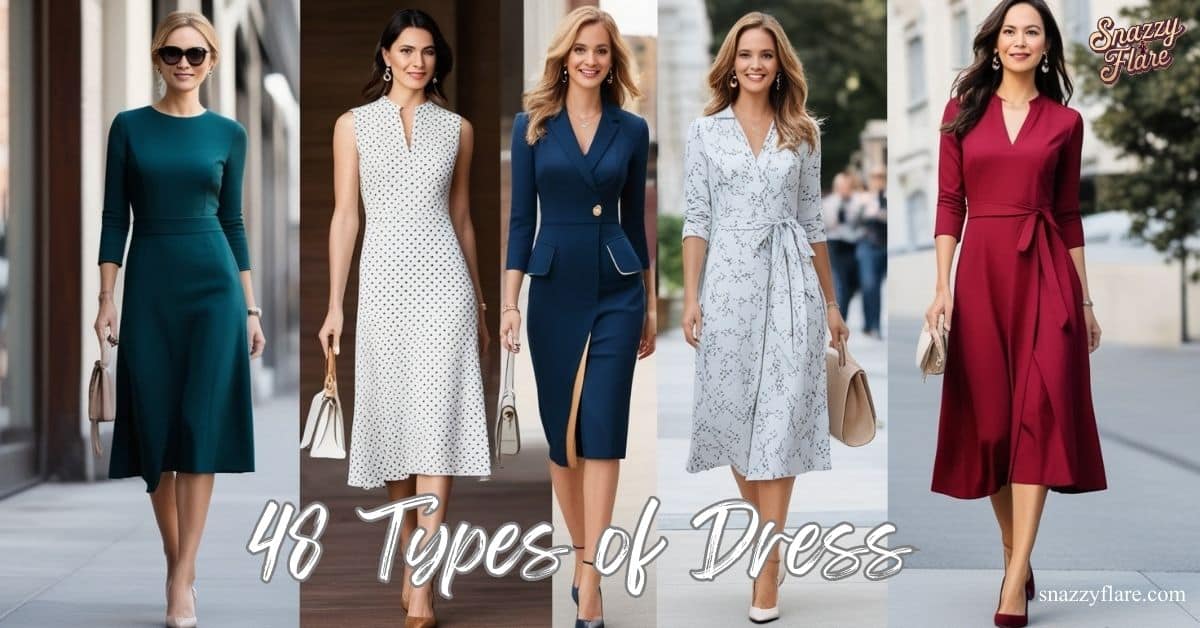In the ever-evolving world of fashion, dresses stand as timeless icons of style, elegance, and self-expression. From the classic little black dress to avant-garde designs, the variety of dress types available today is truly astounding.
This comprehensive guide will take you on a journey through 48 distinct dress styles, exploring their characteristics, origins, and how to wear them with confidence.
Understanding the World of Dress Types
Before we dive into the myriad of dress types, let’s establish what exactly defines a dress. A dress is a one-piece garment typically worn by women or girls, consisting of a skirt with an attached bodice. This simple definition, however, barely scratches the surface of the incredible diversity in dress design.
Dresses have been central to fashion for centuries, evolving with societal changes, technological advancements, and cultural shifts. They serve not just as clothing, but as powerful symbols of identity, status, and artistic expression.
Looking for more dress Length inspiration? A Guide To Dress Lengths
| Era | Significant Dress Style | Cultural Impact |
| Ancient Egypt | Sheath dresses | Symbolized social status |
| Middle Ages | Layered gowns | Reflected religious modesty |
| Renaissance | Corseted bodices | Emphasized feminine silhouette |
| 1920s | Flapper dresses | Represented women’s liberation |
| 1950s | New Look dresses | Post-war return to femininity |
| 1960s | Mini dresses | Youth culture revolution |
| 1970s | Wrap dresses | Women’s workplace empowerment |
| 2000s | Bodycon dresses | Celebration of curves |
| 2020s | Sustainable dresses | Eco-conscious fashion |
The Evolution of Dress Types: A Brief Timeline
This timeline shows how social movements and cultural shifts have intrinsically influenced dress styles throughout history.
Classifying Dress Types
The 48 dress types are divided into various categories, encompassing a wide range of styles and purposes.
- Classic Dress Length
- Silhouette-Defining Dresses
- Neckline and Sleeve Variations
- Casual and Everyday Dresses
- Formal and Occasion Dresses
- Culturally Inspired Dresses
- Vintage and Retro-Inspired Styles
- Unique and Statement Dresses
- Choosing the Right Dress
- The Future of Dress Design
Let’s explore some of the most popular dress categories within these classifications.
Classic Dress Lengths
Understanding dress lengths is essential when choosing the perfect outfit for any occasion. Different lengths complement various body types, personal styles, and event settings. From mini dresses for a playful look to maxi dresses for an elegant evening, each length has a unique flair.
Here’s a breakdown of the most common dress lengths to help guide your wardrobe choices.
1. Mini Dress
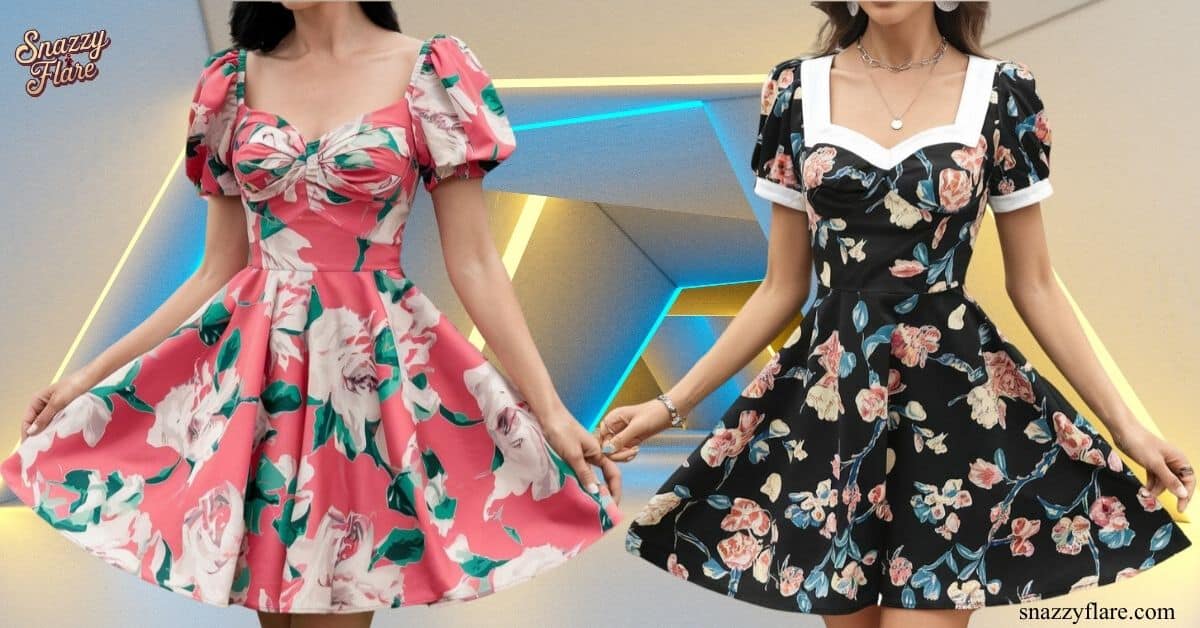
The mini dress typically ends mid-thigh, making it the shortest among the classic dress lengths. It became a fashion staple in the 1960s and is often associated with youthful, fun, and daring styles. Best suited for casual events or nights out, mini dresses pair well with heels for a chic look or sneakers for a more relaxed vibe.
Celebrities like Kendall Jenner and Zendaya have popularized this length by wearing it to events where making a bold statement is key.
2. Midi Dress
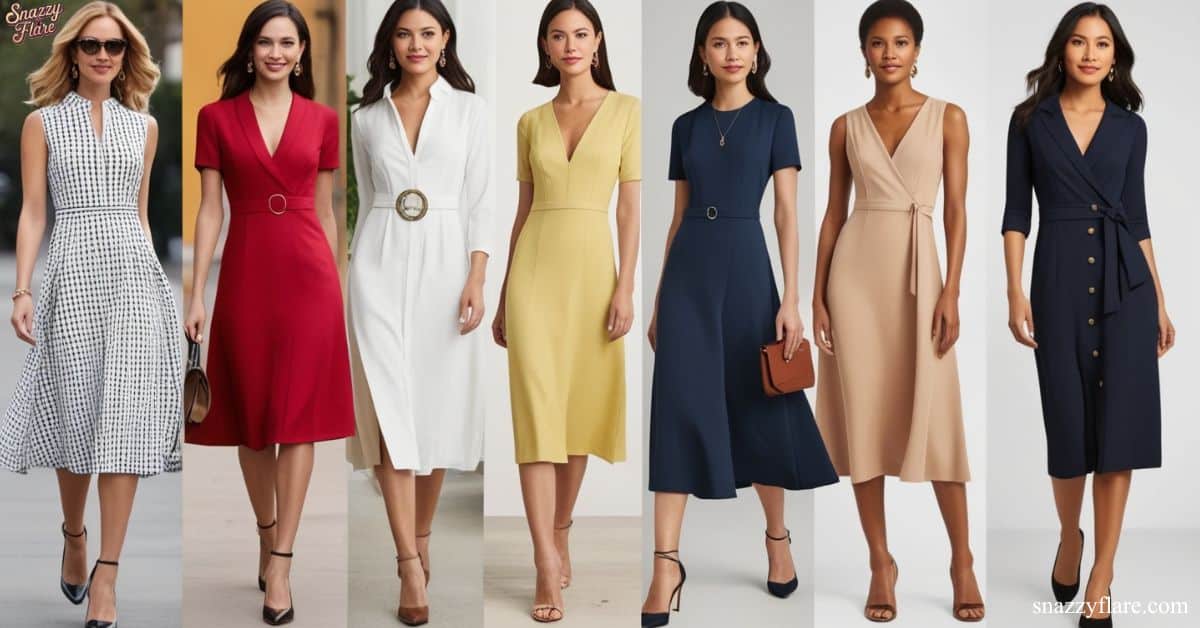
The midi dress is a versatile piece, ending anywhere between the knee and mid-calf. This length is ideal for formal events, office settings, or casual outings. Midi dresses are perfect for creating a balanced look because they provide coverage while still highlighting the figure.
A-line and bodycon midis are particularly flattering, and their popularity has risen in recent years due to their adaptability in both summer and winter styling.
3. Maxi Dress
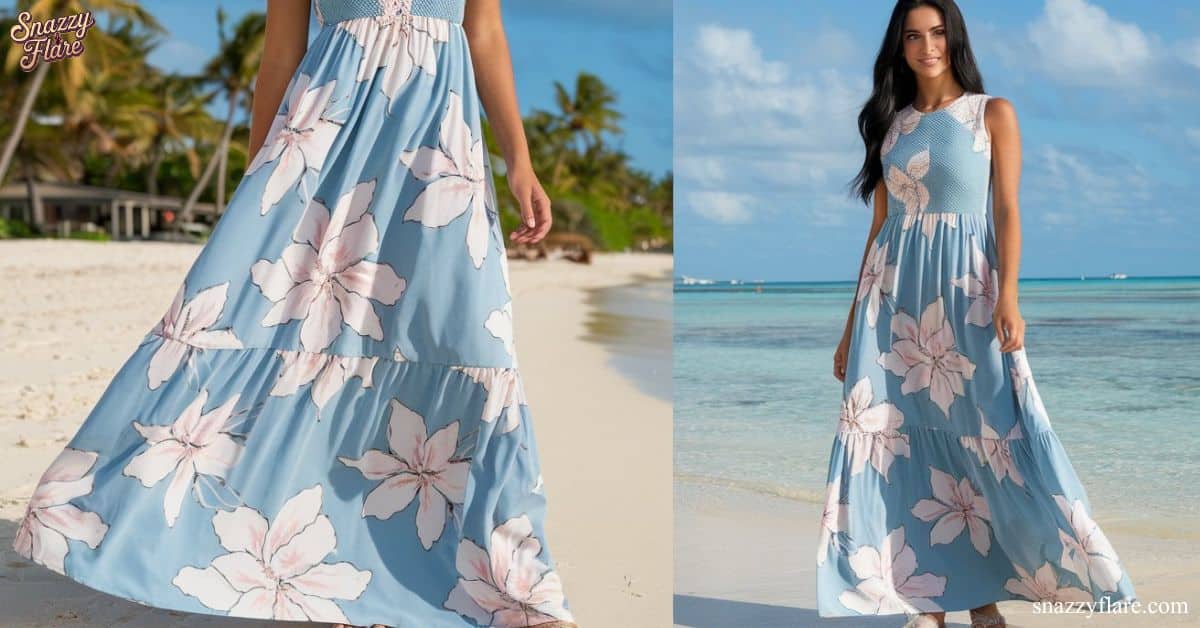
The maxi dress is known for its floor-length design, offering a more elegant and graceful silhouette. This length is typically worn to formal events, weddings, or even beach outings, depending on the fabric and style.
Flowy and often made from lightweight materials, maxi dresses are perfect for hot weather, offering both comfort and coverage. For formal occasions, silk or chiffon maxi dresses are a popular choice, providing a regal and polished look.
4. Tea-Length Dress
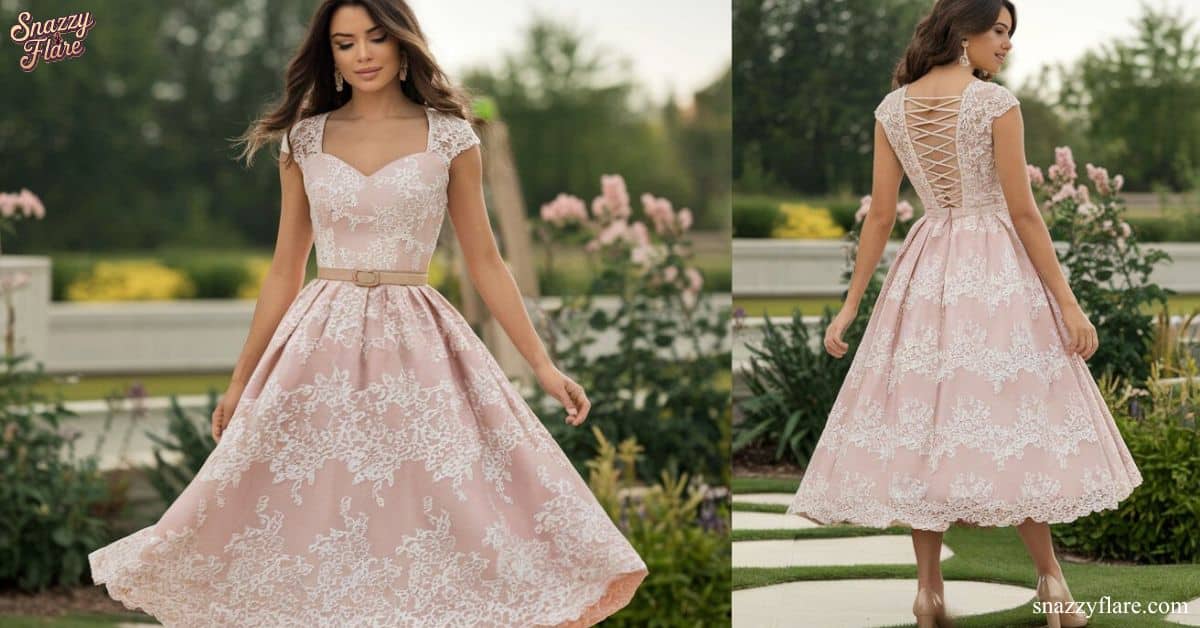
Tea-length dresses usually fall just below the knee or mid-calf, striking the perfect balance between a midi and a maxi dress. Often associated with vintage or retro styles, tea-length dresses are commonly worn at weddings, garden parties, and other semi-formal events.
Their timeless and elegant appearance makes them ideal for showcasing intricate fabric details like lace or embroidery. Grace Kelly and Audrey Hepburn were known to favor this style, cementing its place in classic fashion.
5. High-Low Dress
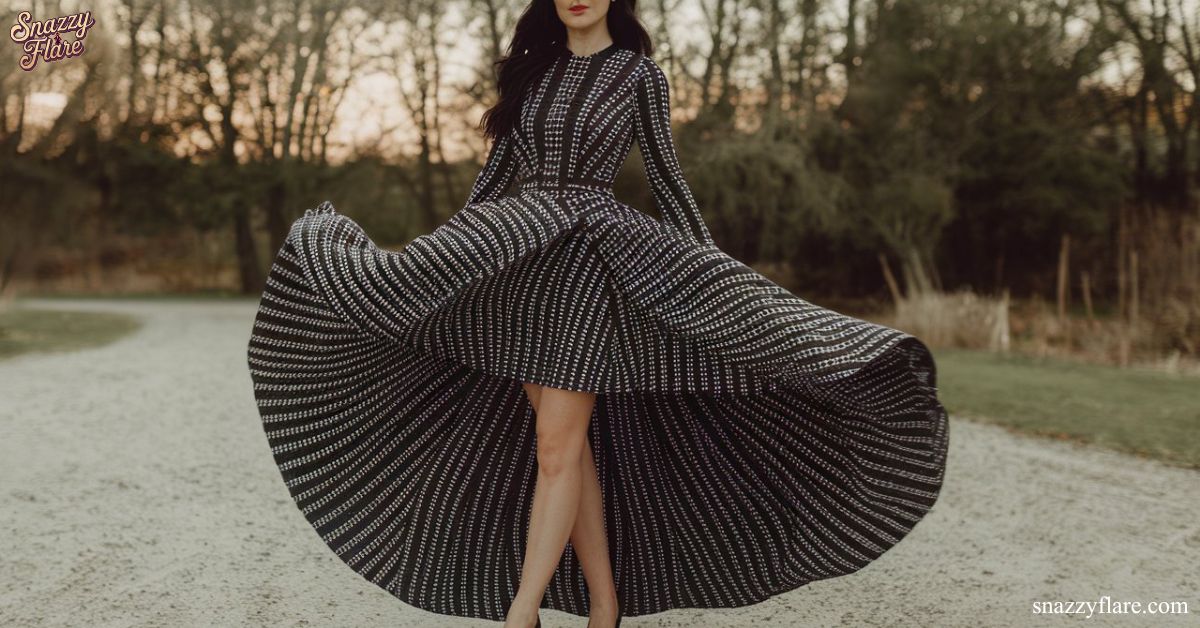
A high-low dress features an asymmetrical hemline that is shorter in the front and longer in the back. This trendy design offers a unique balance between a casual and formal look, allowing you to showcase your legs while still enjoying the flow of a longer dress.
High-low dresses are often chosen for events like summer weddings or cocktail parties due to their modern and stylish silhouette. Paired with heels, this dress length creates a dramatic effect perfect for standing out in a crowd.
Silhouette-Defining the Dress Types
Silhouette-defining dresses play a crucial role in accentuating and flattering different body shapes. These dresses help create balanced proportions, emphasizing features like the waist, hips, or bust. Let’s explore the most popular silhouette-defining styles and how they enhance various figures.
1. A-line Dress
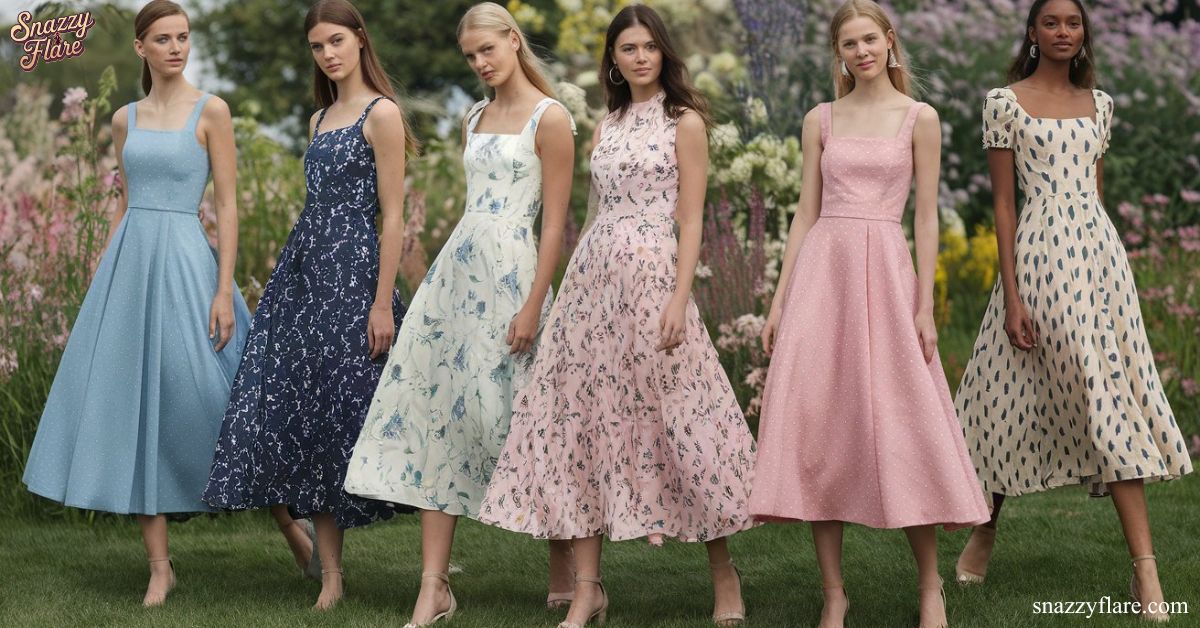
The A-line dress is fitted at the top and gradually flares out toward the hem, forming an “A” shape. This classic silhouette flatters almost every body type by cinching the waist and skimming over the hips. Ideal for casual outings, work, or formal events, this style offers comfort and elegance in one piece.
2. Bodycon Dress
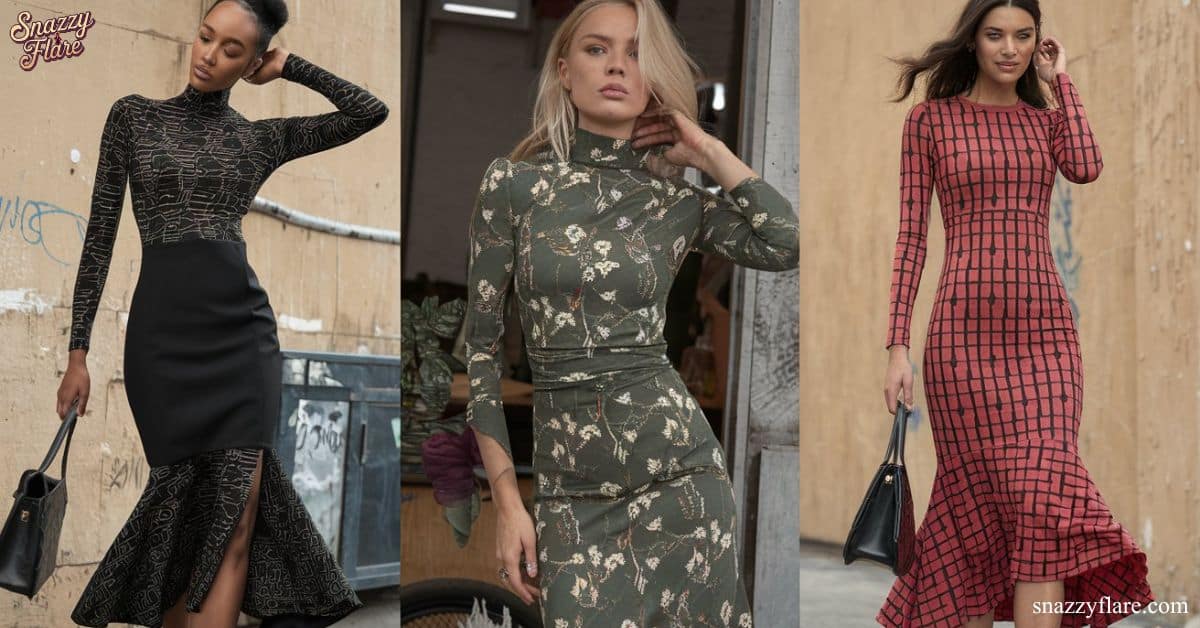
A bodycon dress is tight-fitting and clings to the body’s natural curves. Made from stretchy materials, this style is perfect for those who want to highlight their figure. Popularized by celebrities like Kim Kardashian, the bodycon dress is often worn at evening events. cocktail parties, or special occasions, offering a sultry and confident look.
3. Empire Waist Dress
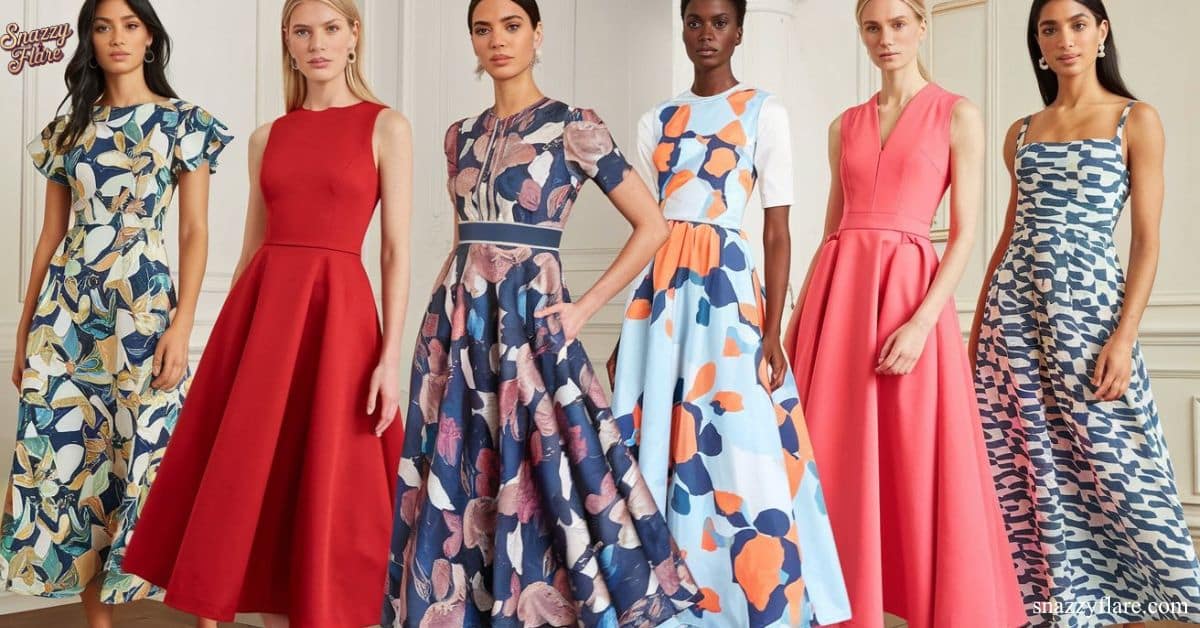
An empire waist dress features a raised waistline just below the bust, with the rest of the dress flowing down. This style is great for creating a long, lean appearance and is often used in maternity fashion due to its comfort and flattering silhouette. It’s ideal for casual and semi-formal occasions, as the cut offers both elegance and ease.
4. Shift Dress
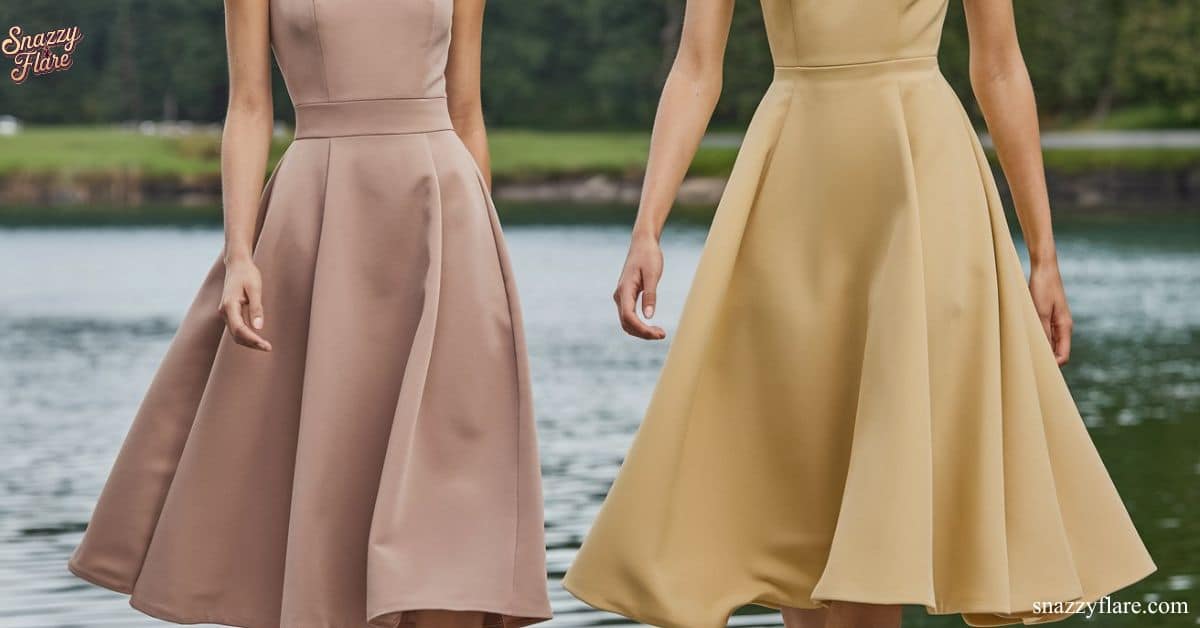
The shift dress has a straight, boxy shape that hangs loosely from the shoulders. Its minimalist design allows for ease of movement, making it perfect for casual wear or work environments. It became popular in the 1960s and is a go-to for anyone seeking a comfortable yet stylish outfit.
5. Sheath Dress
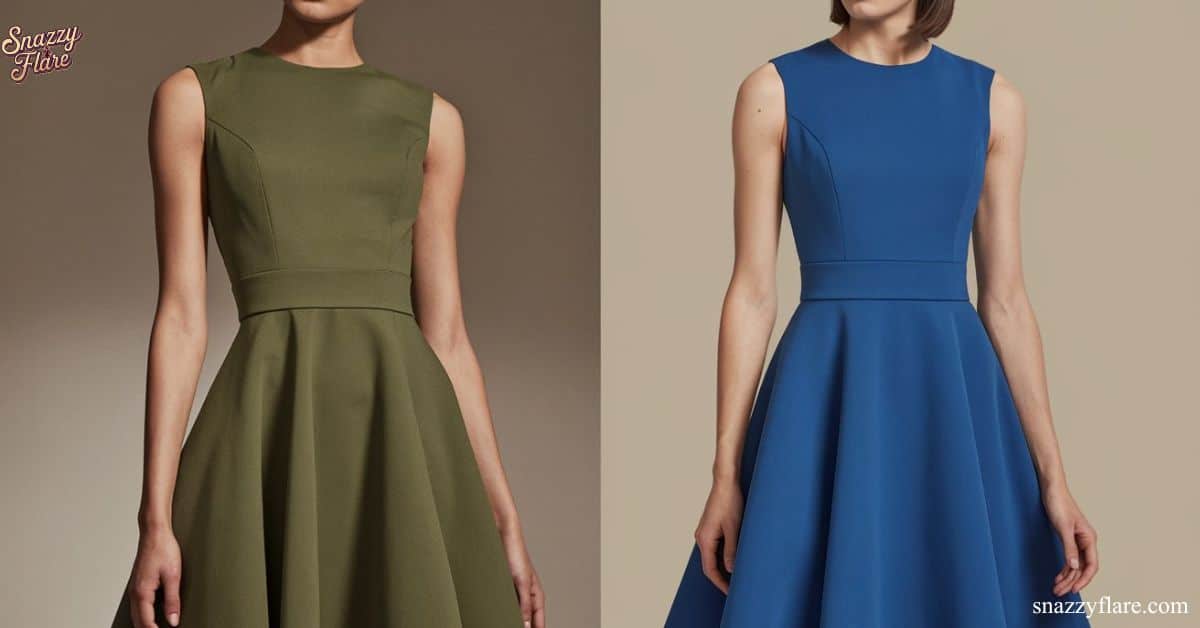
A sheath dress is a fitted, straight-cut dress that typically falls just above the knee. Its form-fitting design makes it perfect for professional settings or formal events, as it offers a sleek, polished look. The sheath dress is often seen in business attire, with options ranging from minimal designs to intricate detailing.
6. Wrap Dress
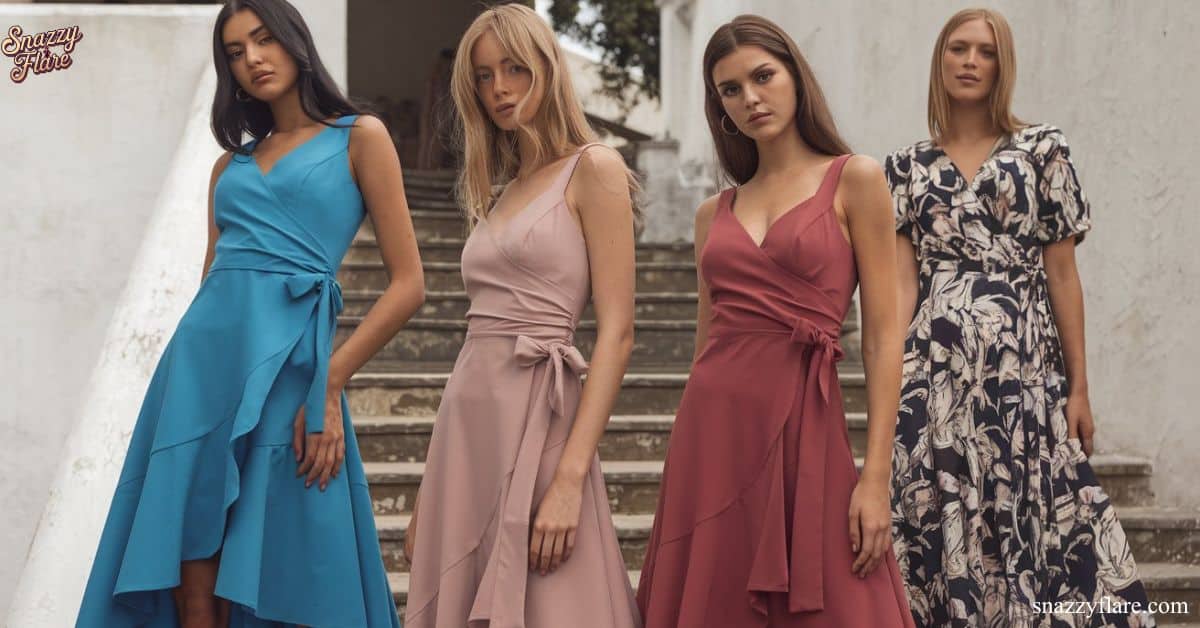
A wrap dress is designed with fabric that wraps around the body and ties at the waist, creating a flattering, adjustable fit. This style enhances the waist while providing comfort and versatility. Perfect for all body types, wrap dresses are often worn for business casual events or weekend outings.
Case Study: The Wrap Dress Revolution
The wrap dress revolution began in the 1970s when designer Diane von Furstenberg popularized it as a symbol of female empowerment and versatility. The simple yet elegant design allowed women to feel confident and stylish, whether at work or out for dinner. Its influence persists today, making it a timeless wardrobe staple.
7. Mermaid/Trumpet Dress
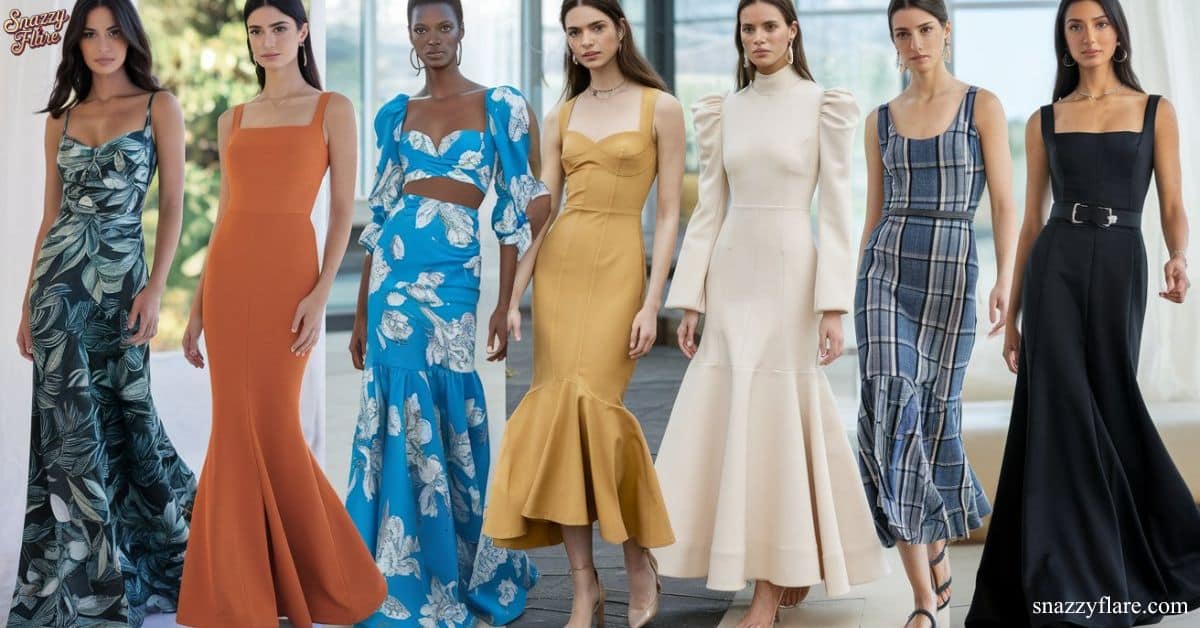
The mermaid or trumpet dress hugs the body from the chest to the knees and then flares out dramatically. This dramatic silhouette is often worn at formal events, weddings, or red-carpet appearances, as it accentuates curves and creates a striking, glamorous look.
8. Ballgown/Princess Dress
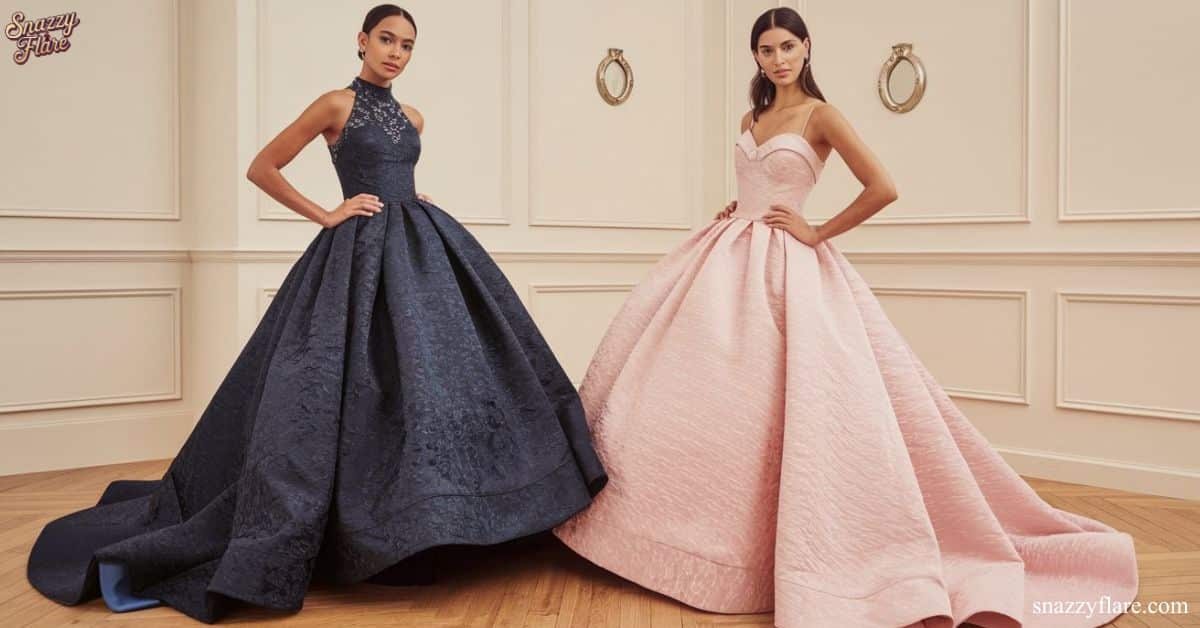
A ballgown or princess dress has a fitted bodice and a voluminous skirt, ideal for formal events like weddings and galas. This classic silhouette is reminiscent of royalty, offering a fairy-tale-like elegance. The style emphasizes the waist while creating a dramatic, full skirt that moves gracefully with the wearer.
9. Column Dress
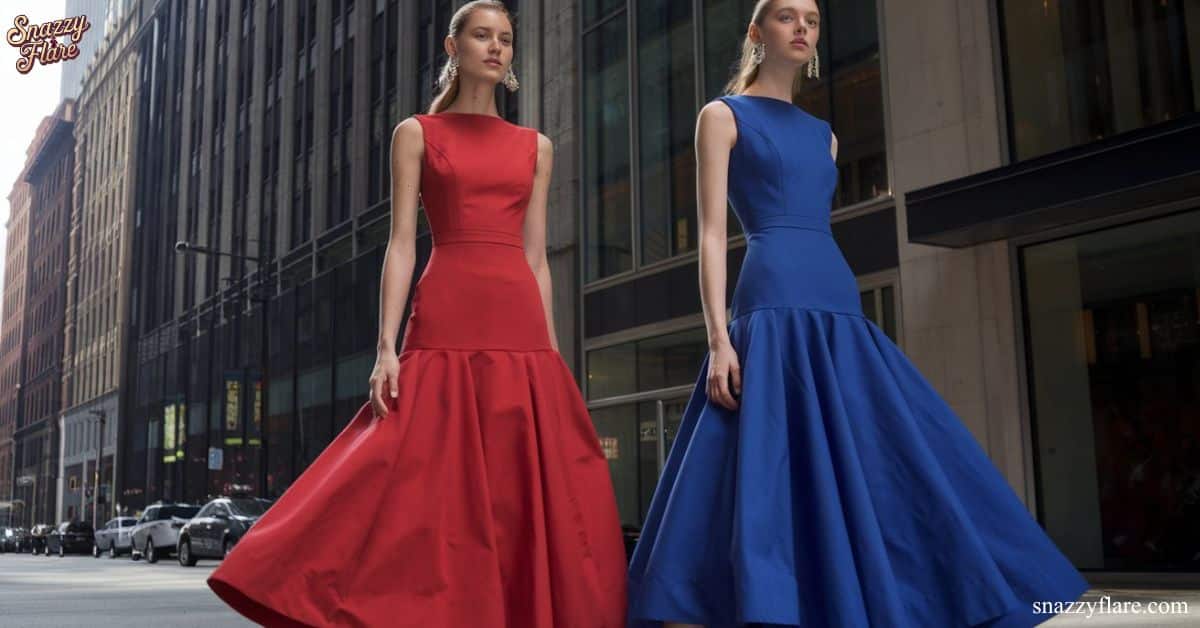
A column dress, also known as a straight dress, is a long, narrow gown that flows straight down without much flare. This style provides a sleek, minimalist look and is often seen at red-carpet events or formal galas. Its clean lines create a sophisticated appearance, especially when paired with simple accessories.
10. Trapeze Dress
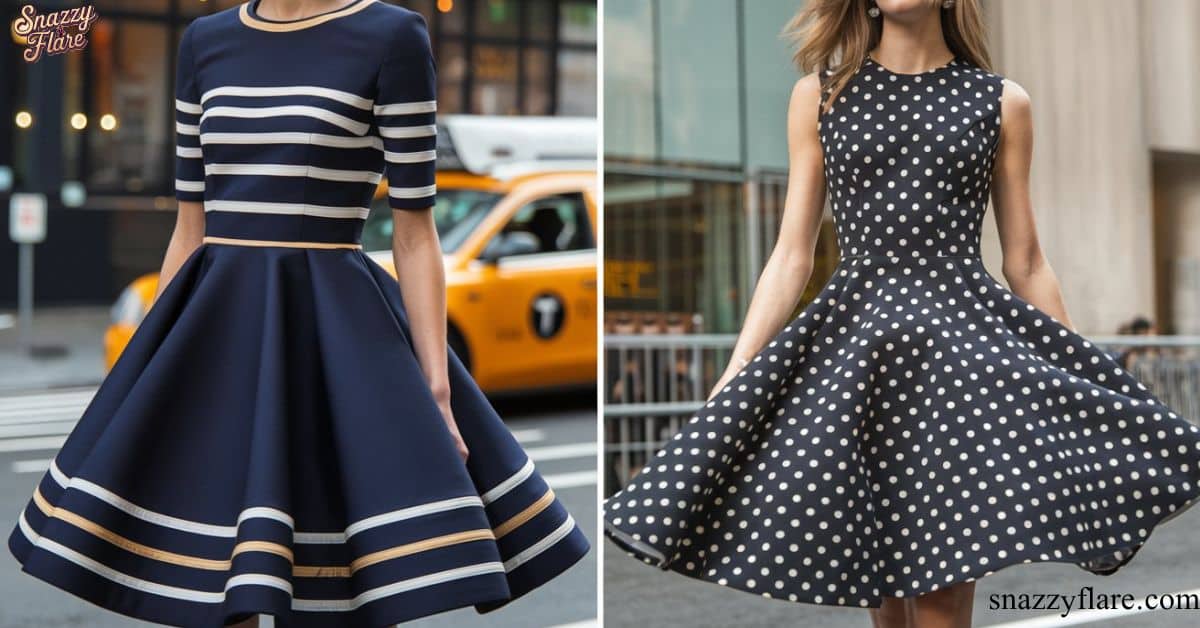
The trapeze dress is similar to the A-line but features an even wider flare, beginning at the shoulders. This loose, flowy design is comfortable and chic, perfect for summer outings or casual settings. Its playful silhouette provides ease of movement while still offering style and personality.
Neckline and Sleeve Variations
Choosing the right neckline and sleeve style can dramatically change the look and feel of a dress. Each variation highlights different parts of the body, enhancing the overall silhouette. Let’s explore some popular neckline and sleeve variations and their impact on style.
1. Off-Shoulder Dress
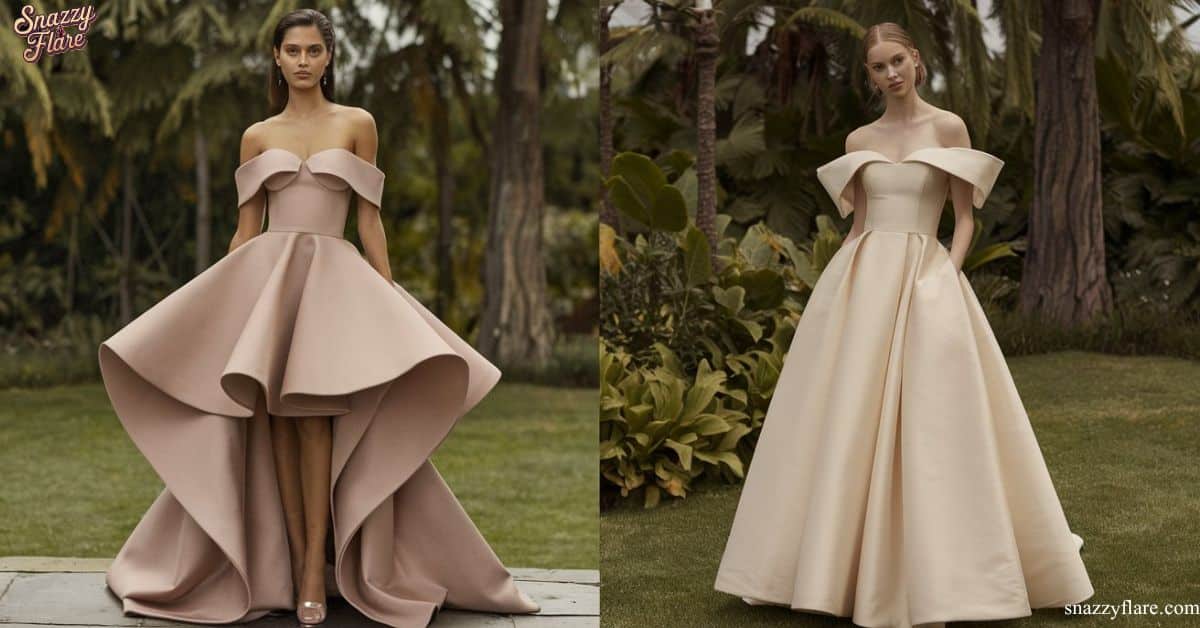
The off-shoulder dress exposes the shoulders and collarbone while offering a romantic and feminine look. This style is ideal for warm weather or formal events and adds a touch of elegance to any outfit. Popular among brides and for summer parties, off-shoulder dresses provide an effortless balance between sexy and sophisticated.
2. One Shoulder Dress
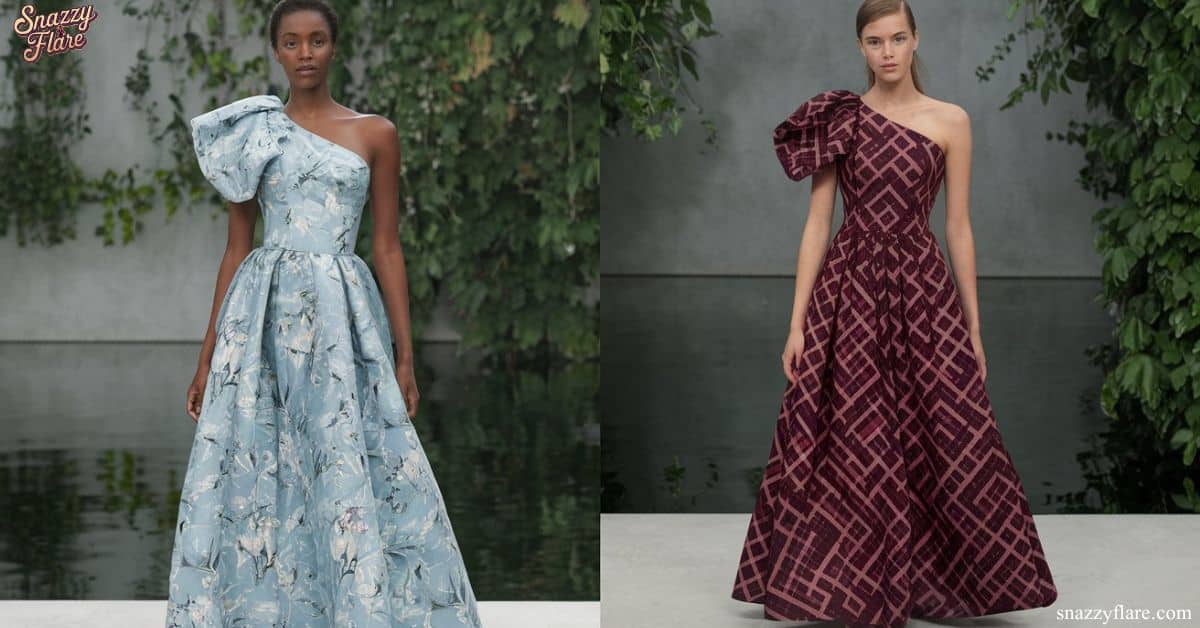
The one-shoulder dress features an asymmetrical neckline that adds a modern, bold twist to the traditional dress design. This style emphasizes the neck and shoulders, creating a striking silhouette that’s perfect for cocktail parties or evening events. Paired with statement earrings, the one-shoulder look offers an edgy, chic vibe.
3. Halter Dress
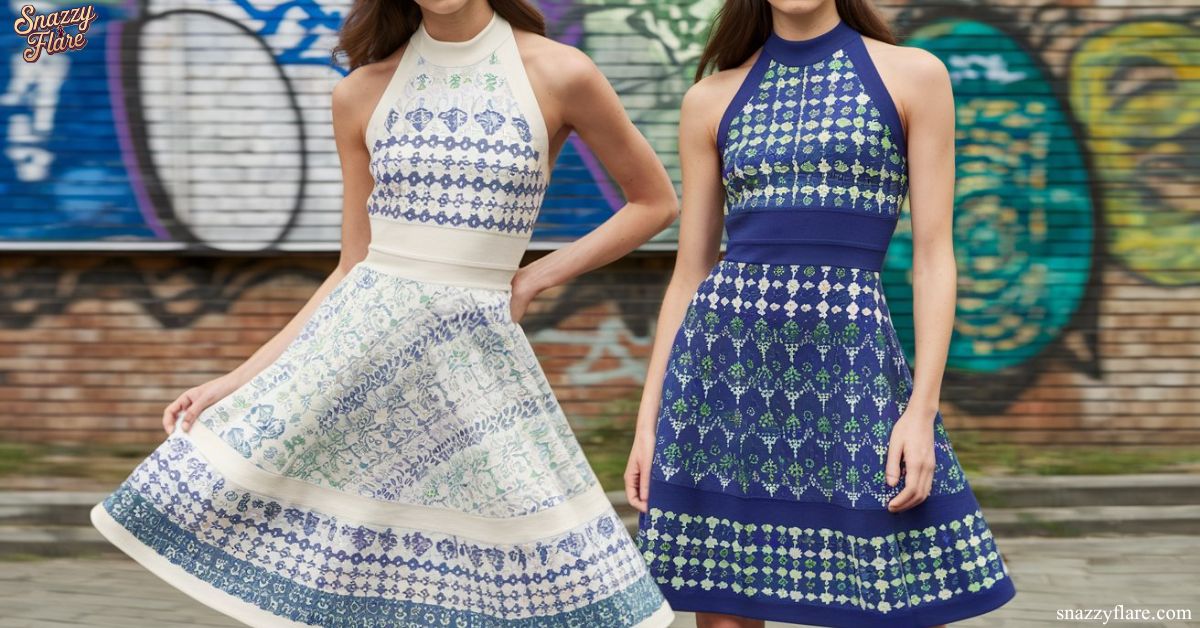
A halter dress has straps that wrap around the neck, leaving the shoulders and upper back exposed. This style is ideal for showcasing toned arms and creating a sleek, elongating effect. Often seen at beach weddings or summer outings, halter dresses are a great option for those seeking a balance between comfort and elegance.
4. Bardot Dress
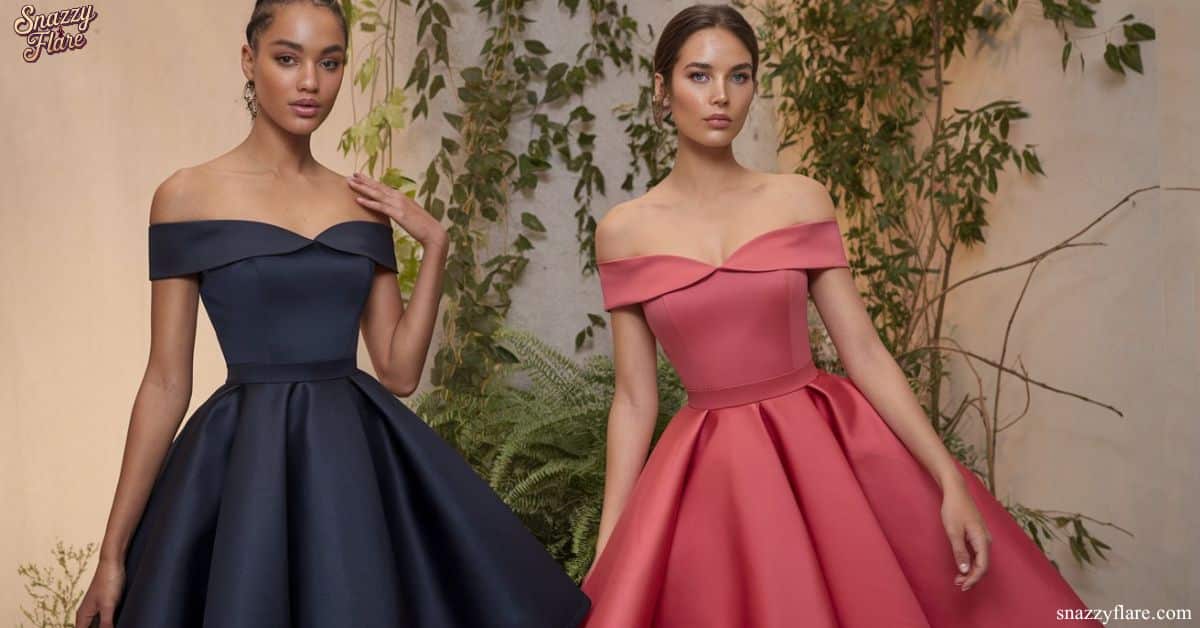
The Bardot dress, named after French actress Brigitte Bardot, offers a timeless off-shoulder style that exudes vintage glamor. The neckline sits just below the shoulders, highlighting the collarbone and creating a delicate, feminine look. It’s often worn for both casual and formal settings, pairing beautifully with bold jewelry for a statement look.
5. V-neck Dress
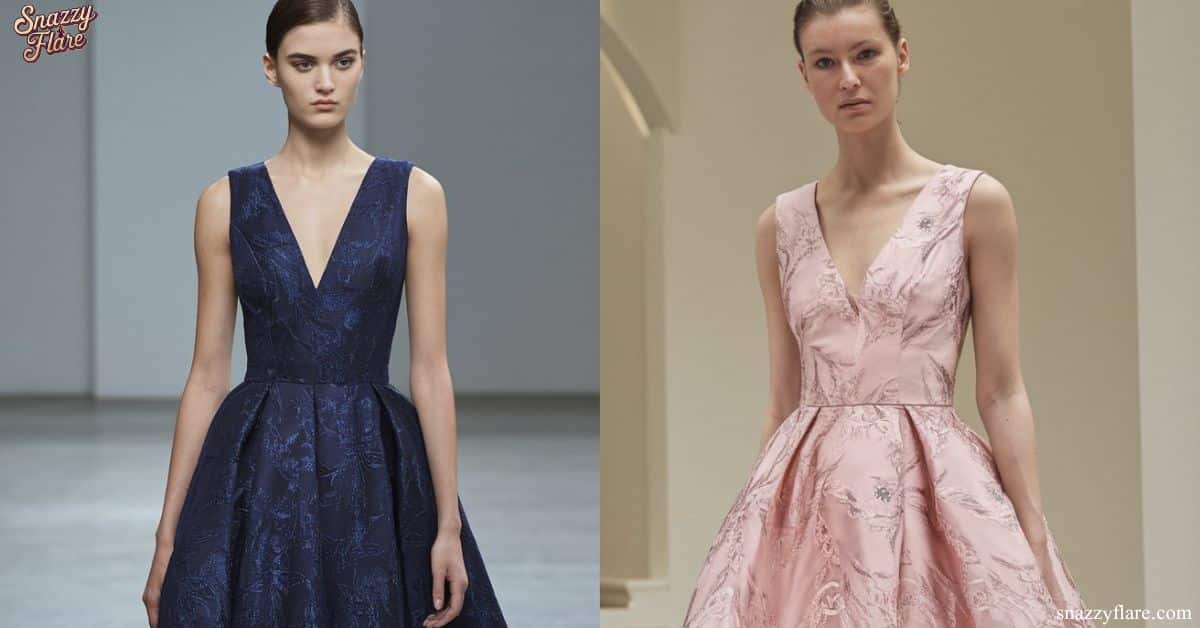
The V-neck dress features a neckline that dips down in a V-shape, elongating the neck and adding a touch of sophistication. This style can be worn casually or formally, depending on the depth of the V. Flattering on most body types, the V-neck helps draw attention to the face and upper body, creating a balanced, elegant appearance.
Casual and Everyday Dresses
Casual dresses are the backbone of any wardrobe, offering comfort and style for everyday wear. From relaxed fits to versatile designs, these dresses are perfect for running errands, meeting friends, or lounging in comfort. Below are some popular casual dress styles that balance both ease and fashion.
1. T-shirt Dress
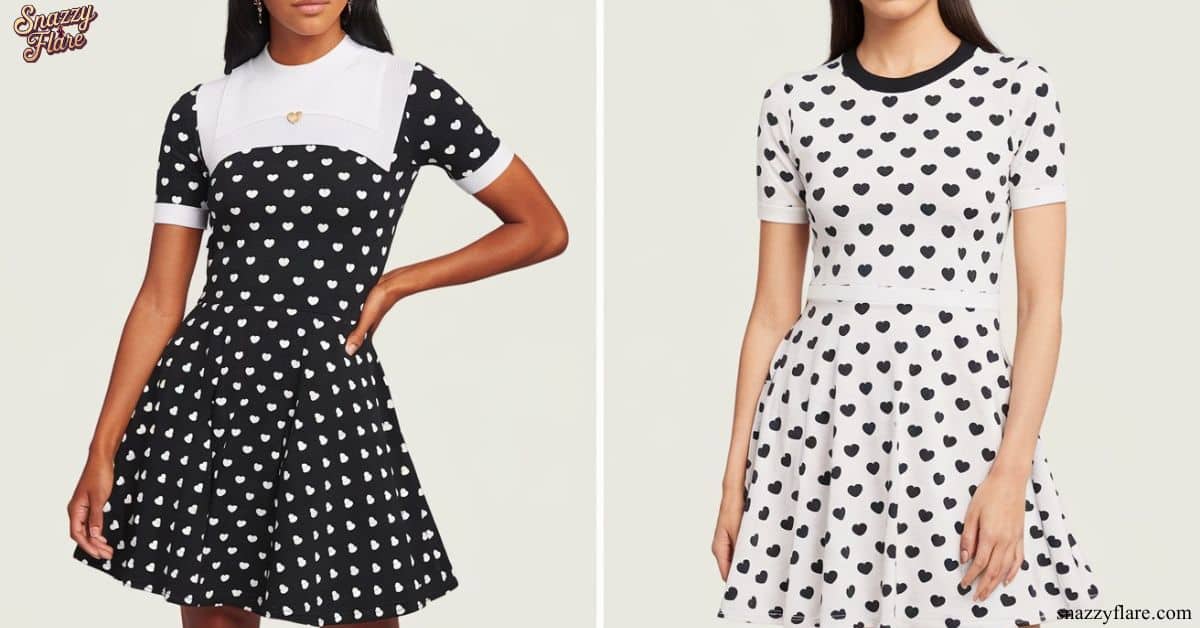
The T-shirt dress combines the simplicity of a T-shirt with the comfort of a dress, offering a laid-back, versatile piece. It’s ideal for casual outings, beach days, or even layering with a jacket for cooler weather. Made from soft fabrics like cotton, this dress is both comfortable and stylish, often paired with sneakers or sandals for a relaxed look.
2. Shirt Dress
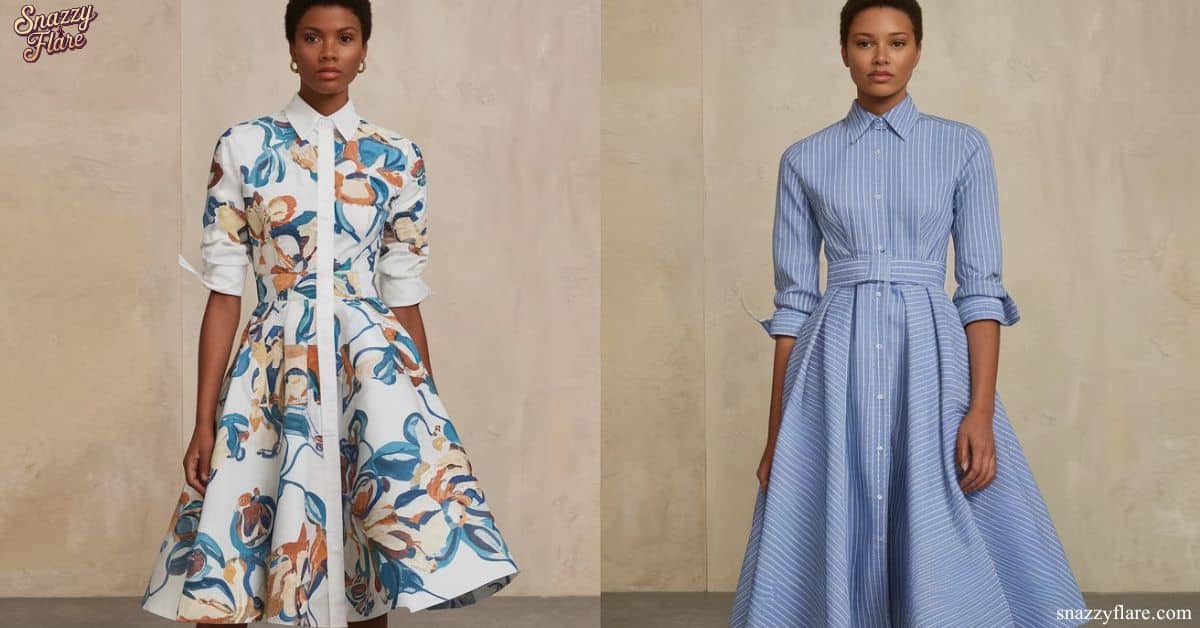
A shirt dress mimics the structure of a button-down shirt but extends into a dress form. This style is perfect for casual or semi-casual events, offering a blend of professionalism and ease. Belted at the waist, a shirt dress adds structure, making it a go-to option for both work environments and weekend brunches.
3. Sweater Dress
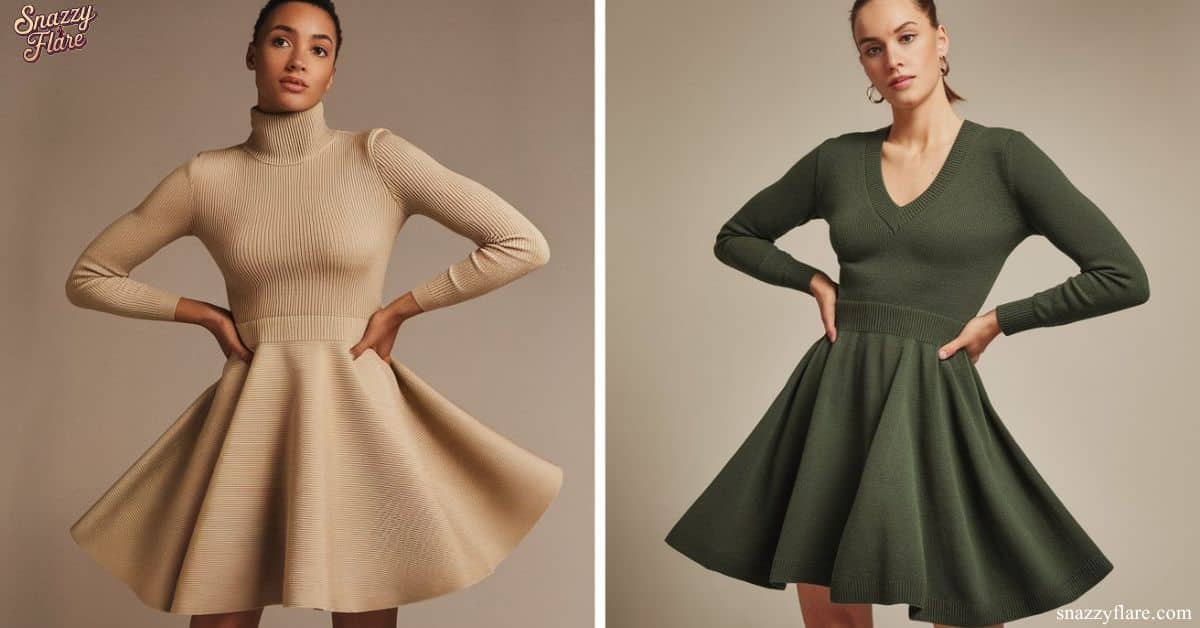
A sweater dress is a cozy, knitted option perfect for cooler seasons. It combines the warmth of a sweater with the silhouette of a dress, making it ideal for fall and winter wear. Paired with boots and tights, this dress offers a chic, snug fit while still keeping you warm during colder months.
4. Sundress
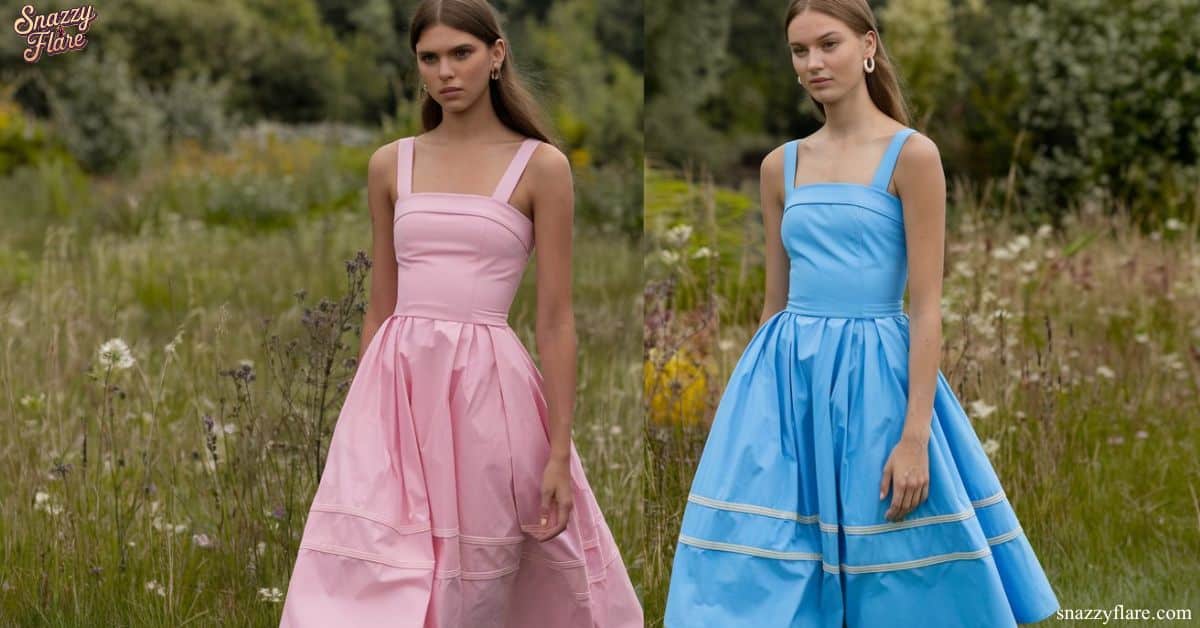
The sundress is a light, breezy dress perfect for warm weather. Typically made from breathable fabrics like cotton or linen, it offers comfort while still being fashionable. Often worn at picnics, beach outings, or casual daytime events, sundresses are typically sleeveless or have thin straps, providing ease of movement and a playful look.
5. Skater Dress
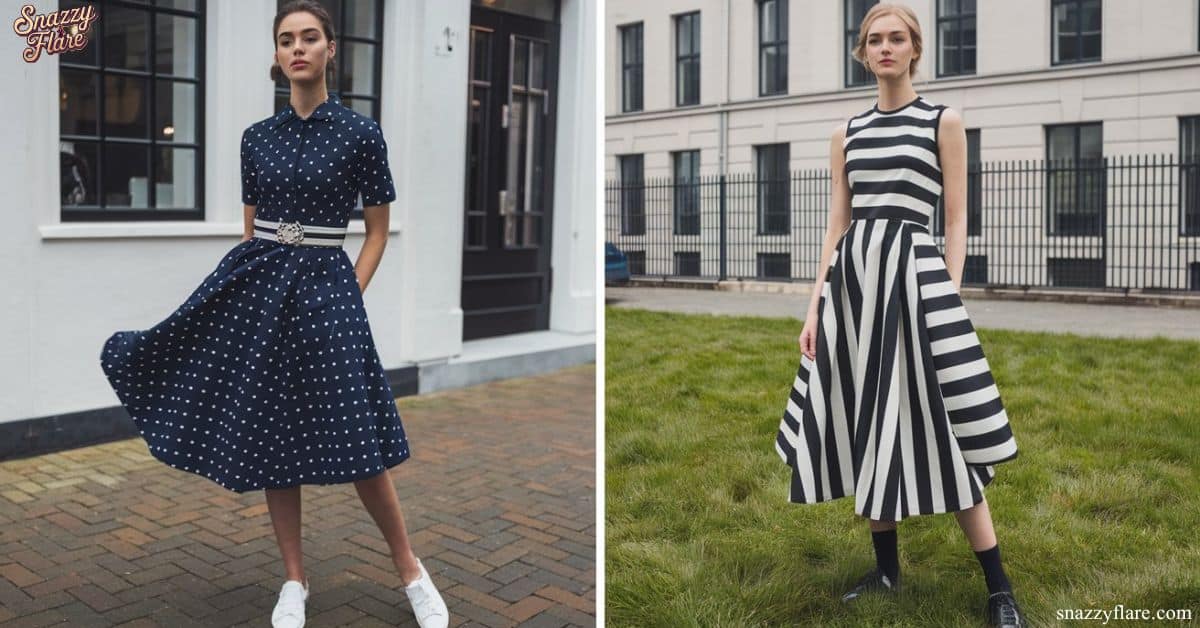
The skater dress is fitted at the waist and flares out into an A-line shape, creating a youthful, fun silhouette. It’s a versatile option, suitable for both casual outings and semi-formal events. With its flattering cut, the skater dress emphasizes the waist and creates a playful, feminine appearance, often worn with sneakers or flats for an everyday look.
Formal and Occasion Dresses
When it comes to formal and special occasions, the right dress can make a bold statement. From cocktail parties to business events, each of these dress styles offers a distinct blend of sophistication and elegance. Let’s dive into some classic and modern options for formal attire.
1. Cocktail Dress
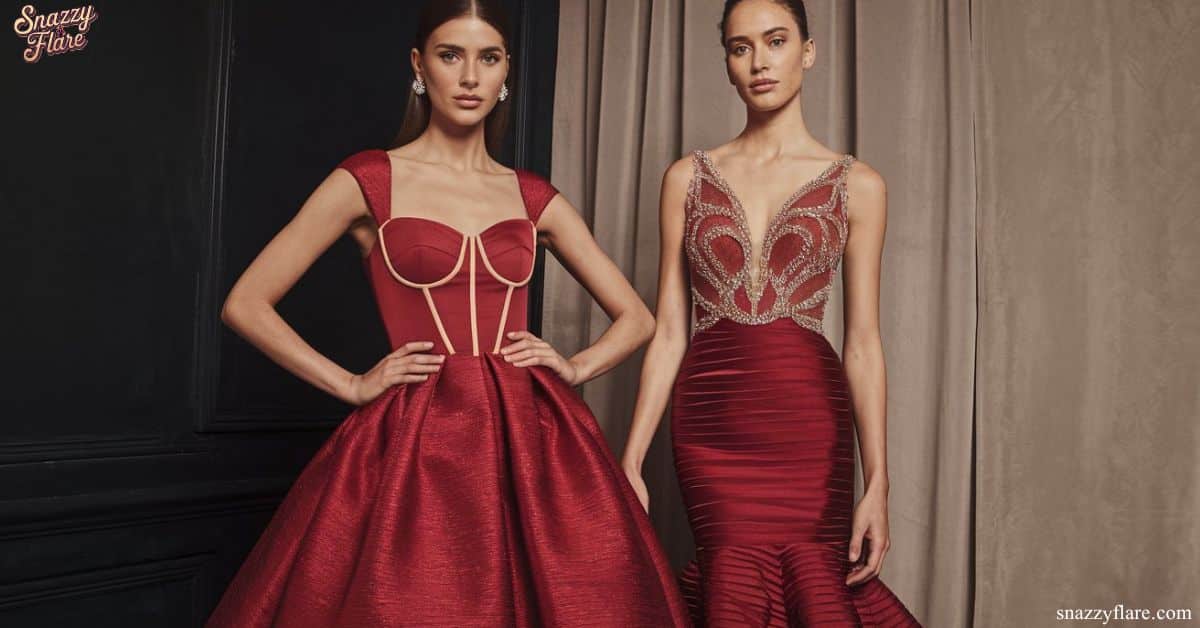
A cocktail dress is typically knee-length or just above the knee, designed for semi-formal occasions such as cocktail parties, dinners, or weddings. This dress style is often made from luxurious fabrics like silk or satin, adding a touch of glamor.
Ideal for events that call for something more polished than casual wear but less formal than a gown, the cocktail dress strikes the perfect balance.
2. Little Black Dress (LBD)
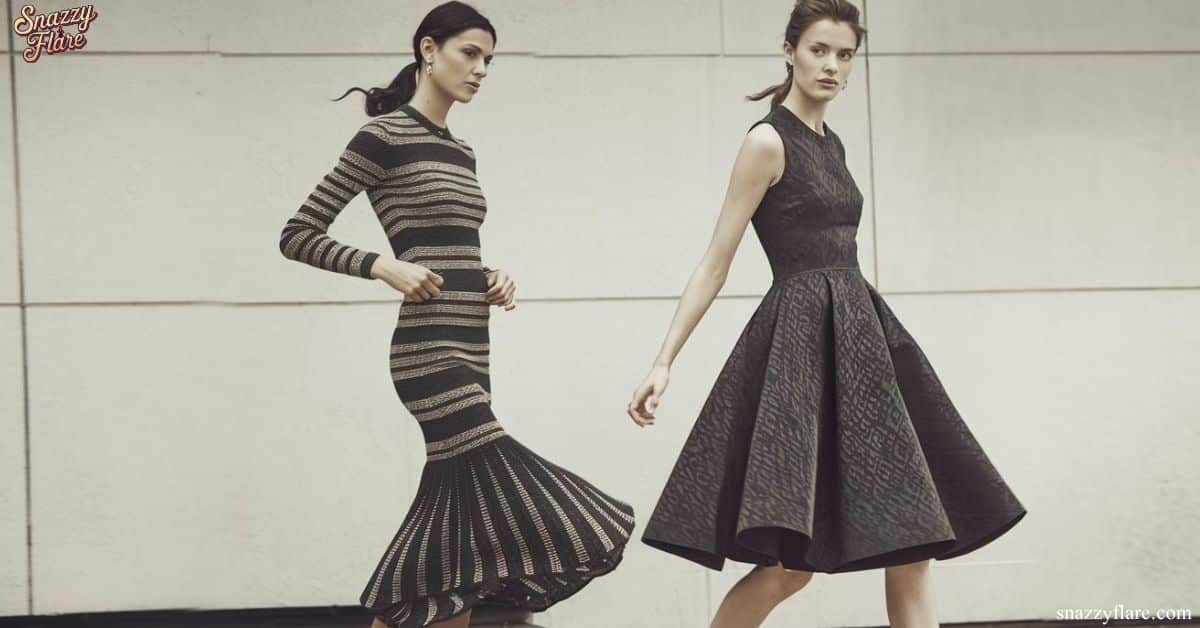
The Little Black Dress (LBD), introduced by Coco Chanel in the 1920s, is a timeless wardrobe essential. Known for its versatility, the LBD can be styled for anything from a business meeting to an evening party.
Its simplicity allows it to be dressed up or down with accessories, making it one of the most reliable and fashionable choices for almost any occasion.
3. Peplum Dress
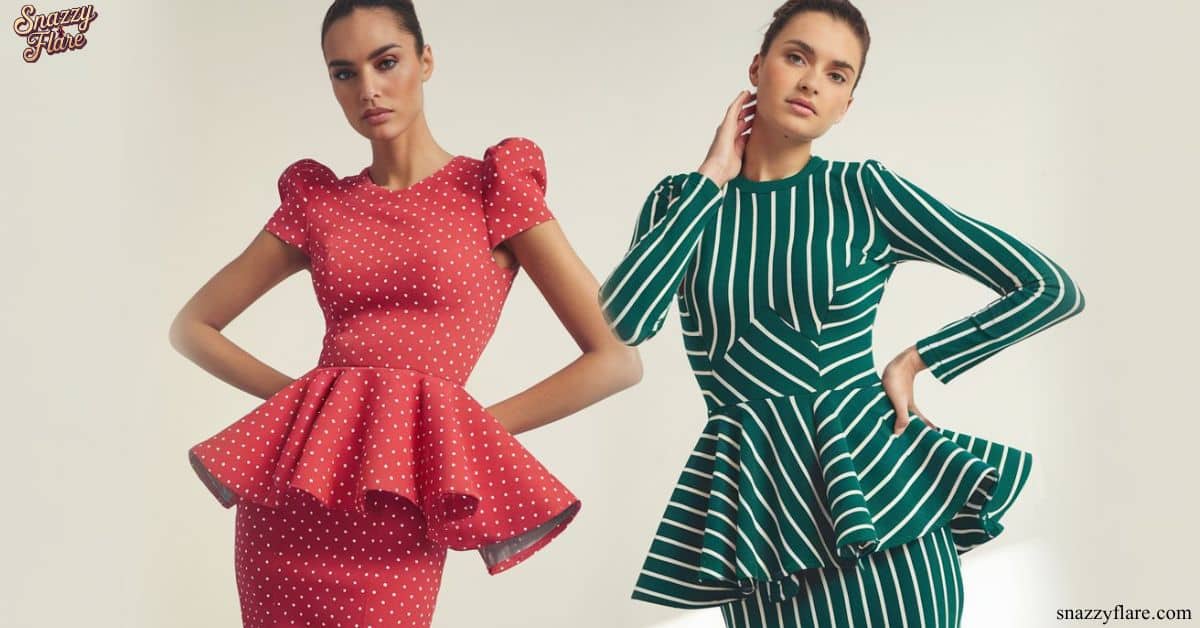
The peplum dress features a short, flared fabric layer attached at the waist, creating an hourglass silhouette. This style accentuates the waist while offering a touch of femininity and elegance. Often worn for formal dinners or business events, the peplum dress gives a polished and structured look, adding a playful yet refined twist to classic styles.
4. Blazer Dress
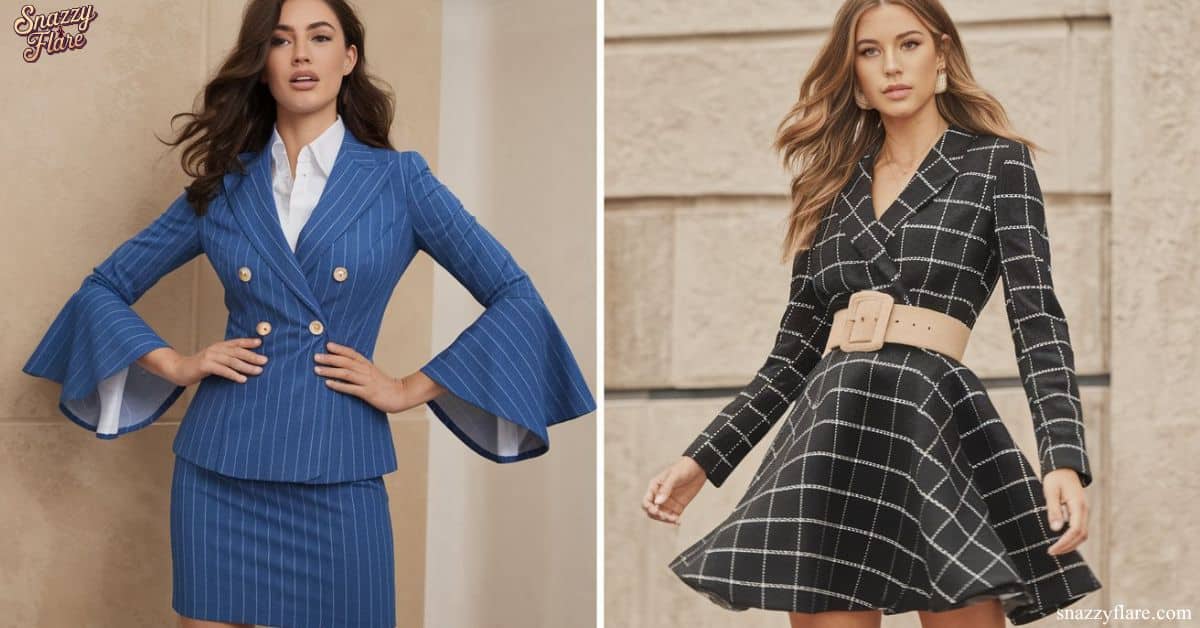
The blazer dress is a fusion of a blazer and a dress, perfect for business-casual or formal events. This design is both powerful and chic, offering a tailored fit that brings a sense of authority and sophistication.
Often worn with heels, the blazer dress exudes confidence while maintaining a polished appearance, making it ideal for meetings or corporate functions.
5. Slip Dress
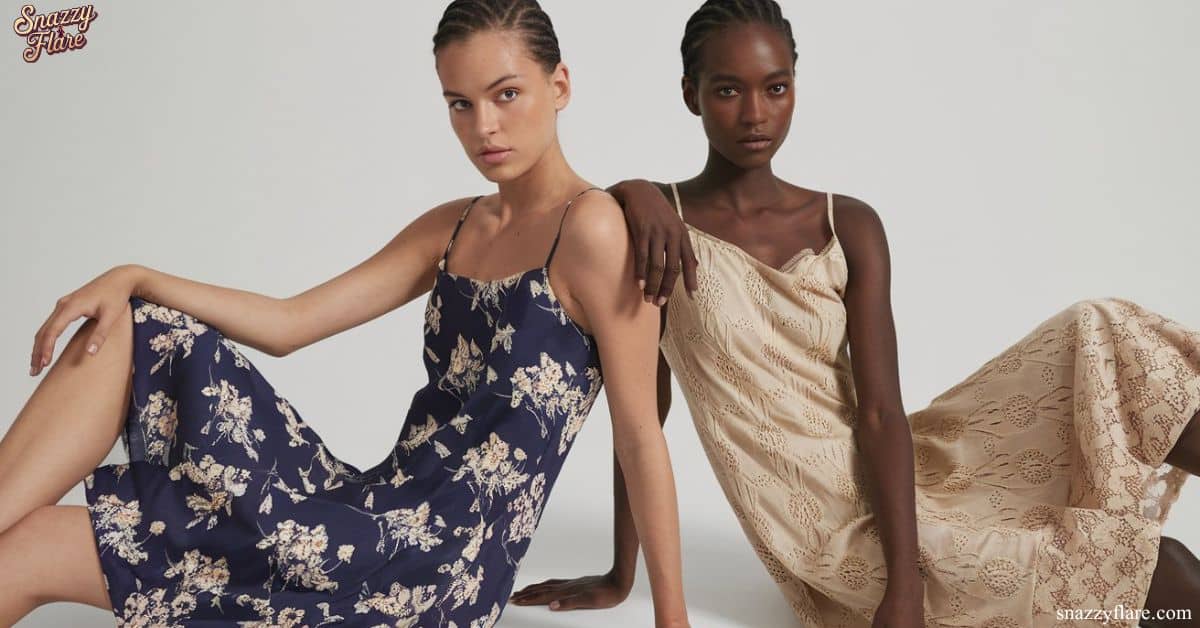
A slip dress is characterized by its sleek, spaghetti-strap design and typically made from lightweight fabrics like satin or silk. Originally designed as undergarments, slip dresses have become a popular choice for both casual and formal occasions.
Minimalistic yet elegant, this dress can be dressed up with jewelry and heels for a glamorous evening look or worn with a jacket for a more casual vibe.
Culturally Inspired Dress Types
Fashion often takes inspiration from traditional attire across the globe. Culturally inspired dresses offer a unique blend of history, craftsmanship, and modern style, bringing elements of traditional clothing into contemporary wardrobes. Let’s explore some iconic styles that have made their mark on global fashion.
1. Kimono Dress
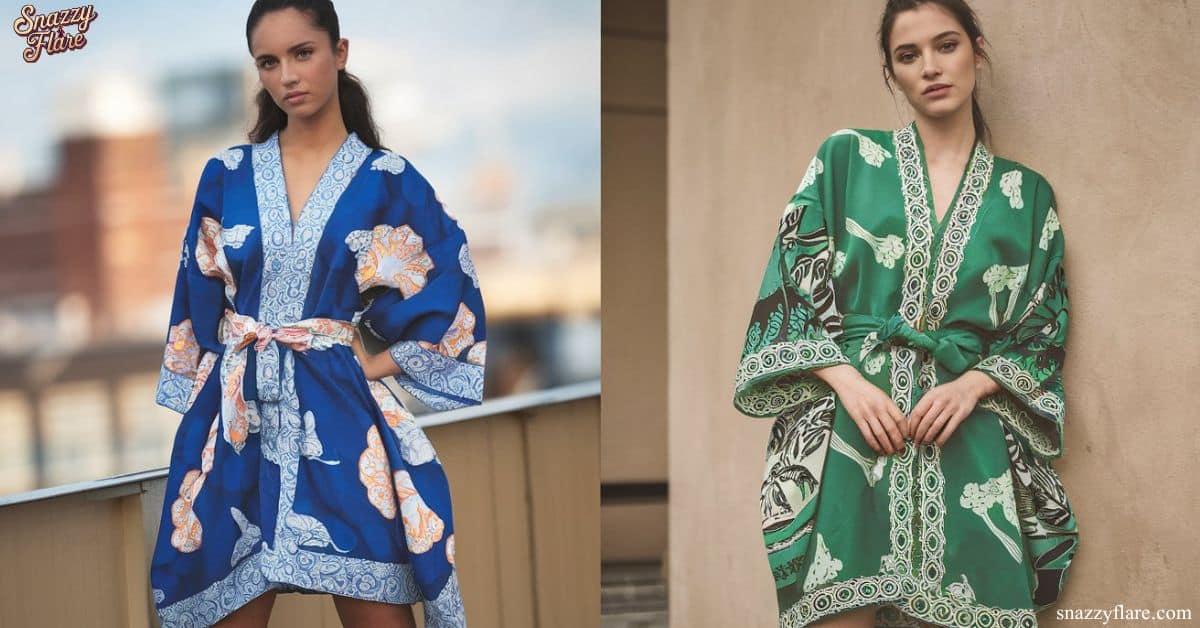
The kimono dress draws inspiration from traditional Japanese kimonos, known for their wide sleeves and wrap-around design. Kimono dresses often retain the signature obi belt and flowing fabric, offering a balance of structure and elegance.
They are typically worn for formal events or special occasions, showcasing intricate patterns and luxurious materials like silk, symbolizing grace and tradition.
2. Qipao/Cheongsam
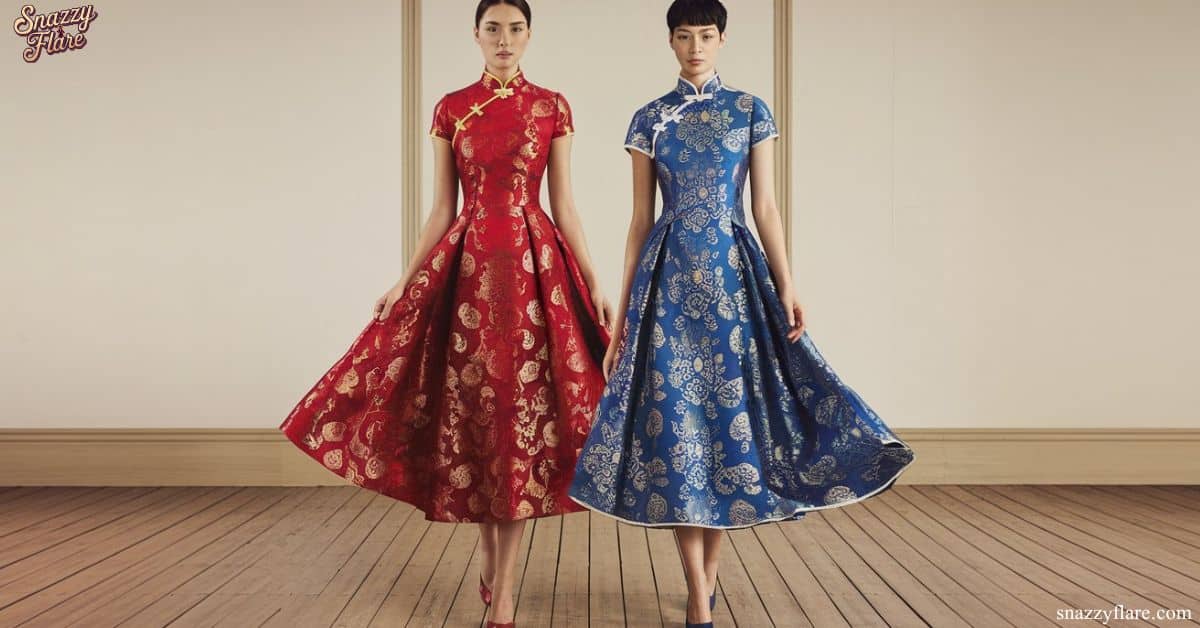
The qipao, also known as the cheongsam, is a traditional Chinese dress that became popular in the 1920s. The qipao, characterized by its high collar, fitted silhouette, and side slits, accentuates the body’s natural curves.
Historically worn by women in Shanghai: the qipao is a symbol of elegance and cultural pride, often crafted from richly embroidered fabrics such as silk or satin.
3. Kaftan
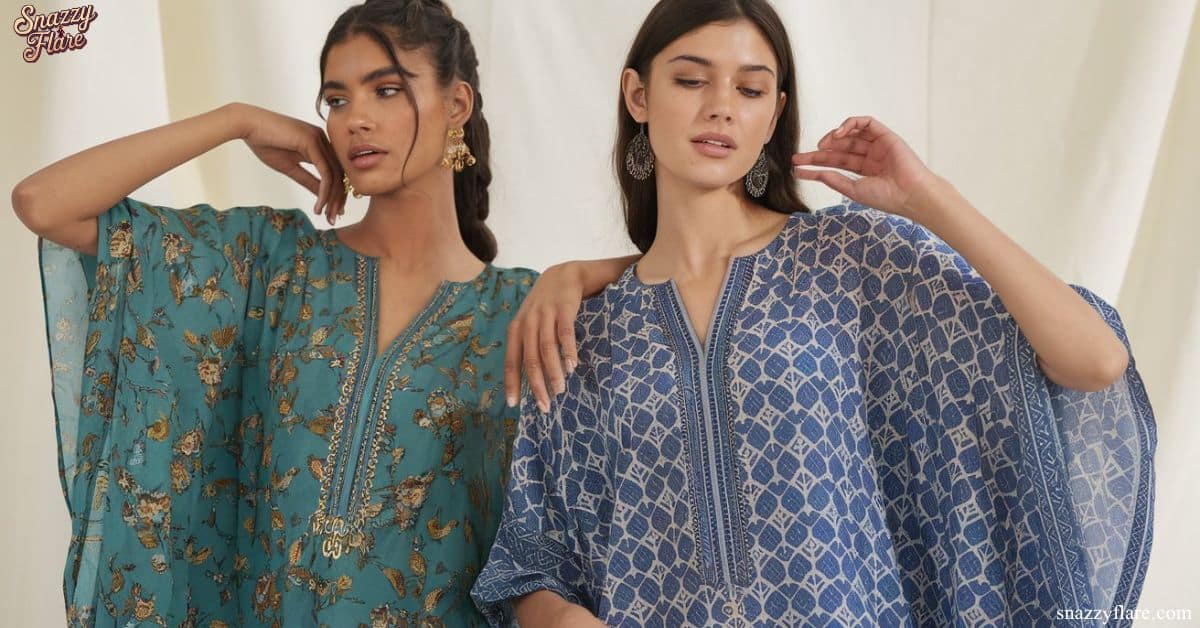
The kaftan is a long, flowing garment that originated in Middle Eastern and North African cultures. Known for its loose, comfortable fit, it is often made from lightweight fabrics, making it perfect for hot climates.
Ideal for beachwear or casual settings, modern kaftans come in a variety of prints and embellishments, offering both comfort and sophistication for everyday wear.
4. Sarong
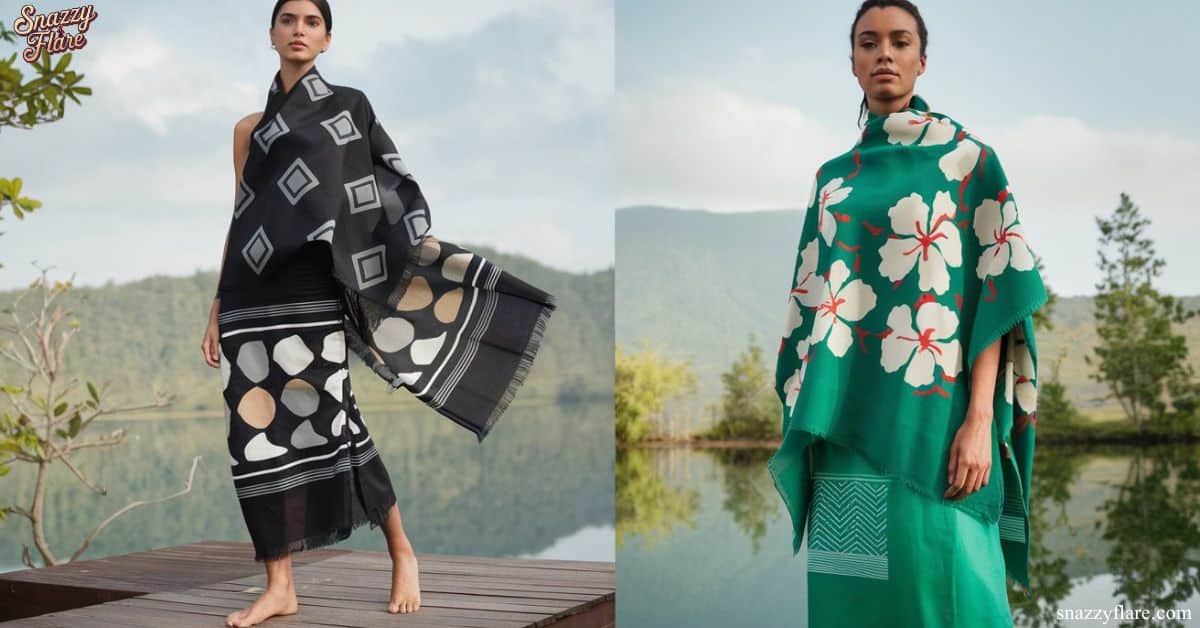
A sarong is a versatile, wraparound garment commonly worn in Southeast Asian and Pacific Island cultures. Made from a single piece of fabric, the sarong can be tied in different ways, offering both functionality and style.
It is typically worn as a beach cover-up or casual summer dress, known for its bright colors and tropical patterns, reflecting the laid-back island lifestyle.
5. Bohemian Dress
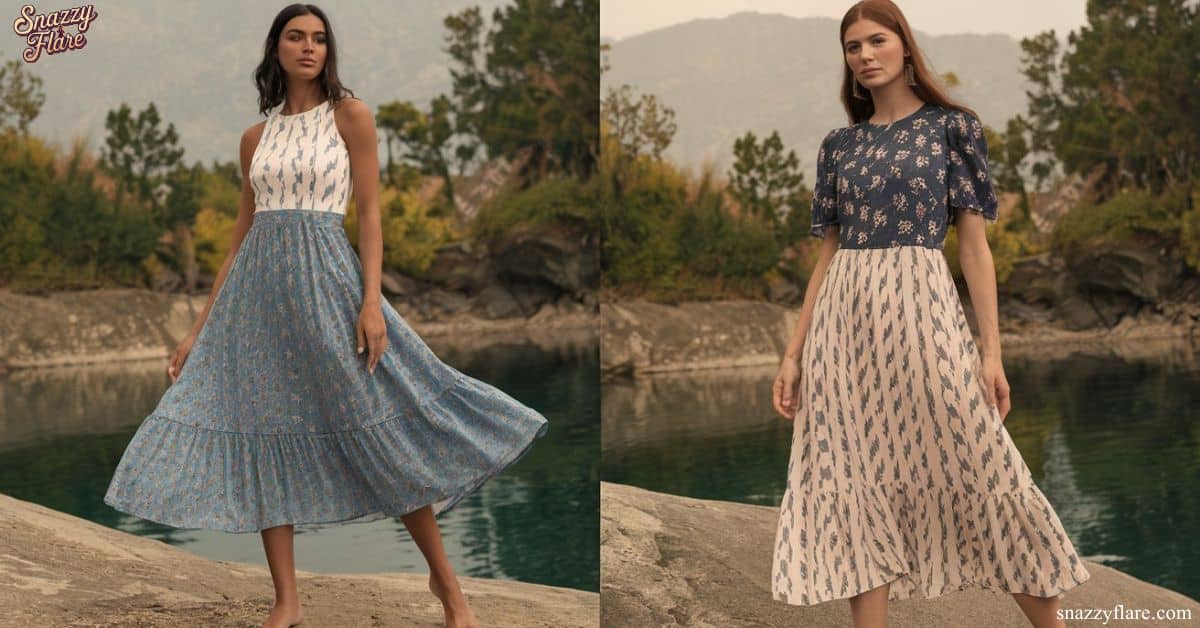
The Bohemian dress takes inspiration from boho-chic fashion, which is deeply rooted in the countercultural movements of the 1960s and 1970s. Known for its flowy silhouettes, earthy tones, and intricate patterns, the Bohemian dress is a symbol of free-spirited and unconventional style.
Often made from natural fabrics like cotton and adorned with details like tassels and embroidery, it’s perfect for festivals, casual gatherings, or artistic events.
Vintage and Retro-Inspired Dress Types
Vintage and retro-inspired dresses bring timeless fashion back into the spotlight, offering a nod to the styles of previous decades. These dresses allow wearers to embrace nostalgia while incorporating modern elements for a fresh take on classic looks. Below are some of the most iconic vintage-inspired styles.
1. Pinafore Dress
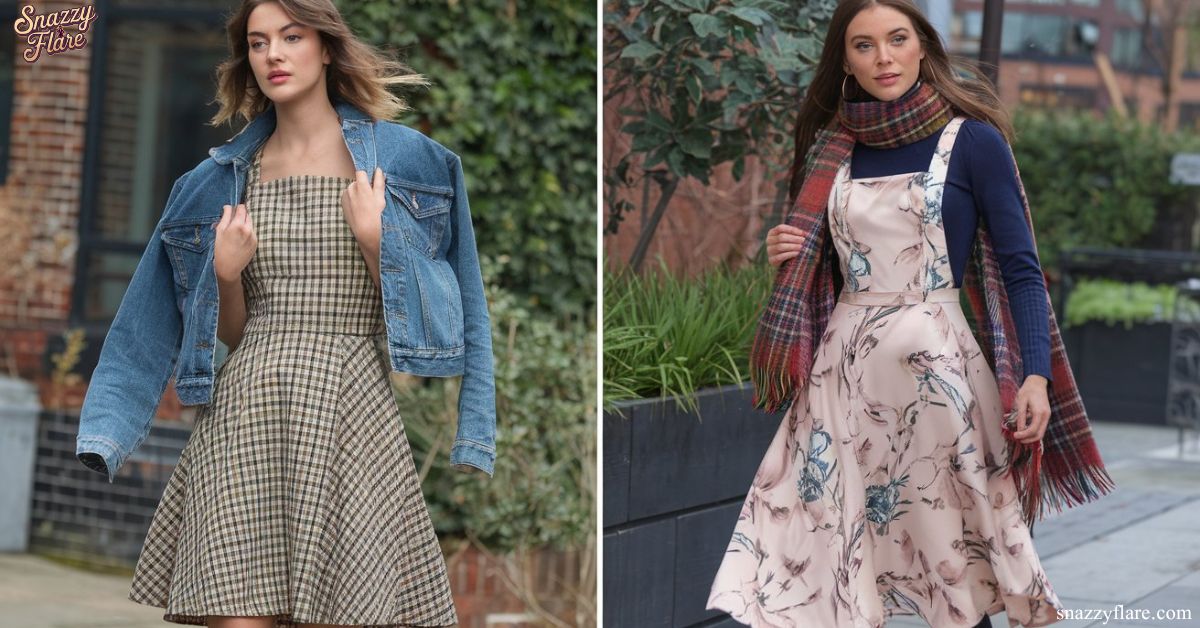
The pinafore dress is a sleeveless garment traditionally worn over a blouse or shirt, evoking a schoolgirl or workwear aesthetic. This style, popular in the 1940s and ’50s, has made a comeback in modern fashion as a playful, layered look.
People often pair the pinafore with turtlenecks or button-downs to create a fun, vintage-inspired outfit, perfect for casual and daywear.
2. Baby doll Dress
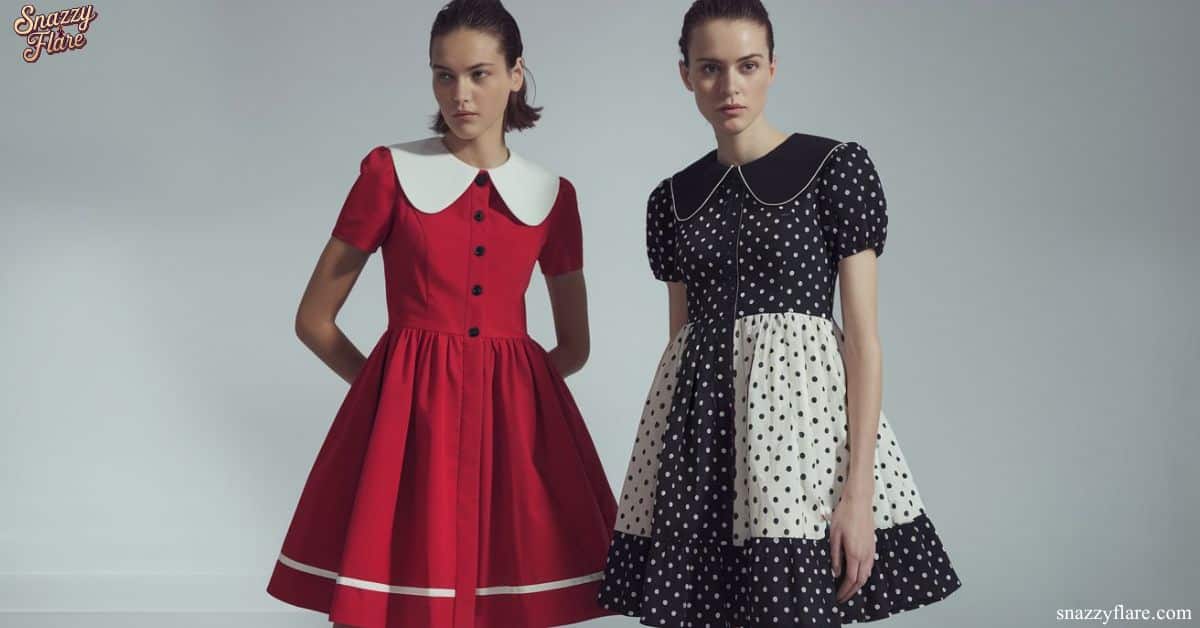
Its short hemline and loose, empire waist fit characterize the babydoll dress, giving it a youthful, playful vibe. Originally popularized in the 1960s, this style remains a go-to for casual outings or as loungewear. Its flowing silhouette offers both comfort and charm, making it a versatile piece for various occasions.
3. Drop Waist Dress
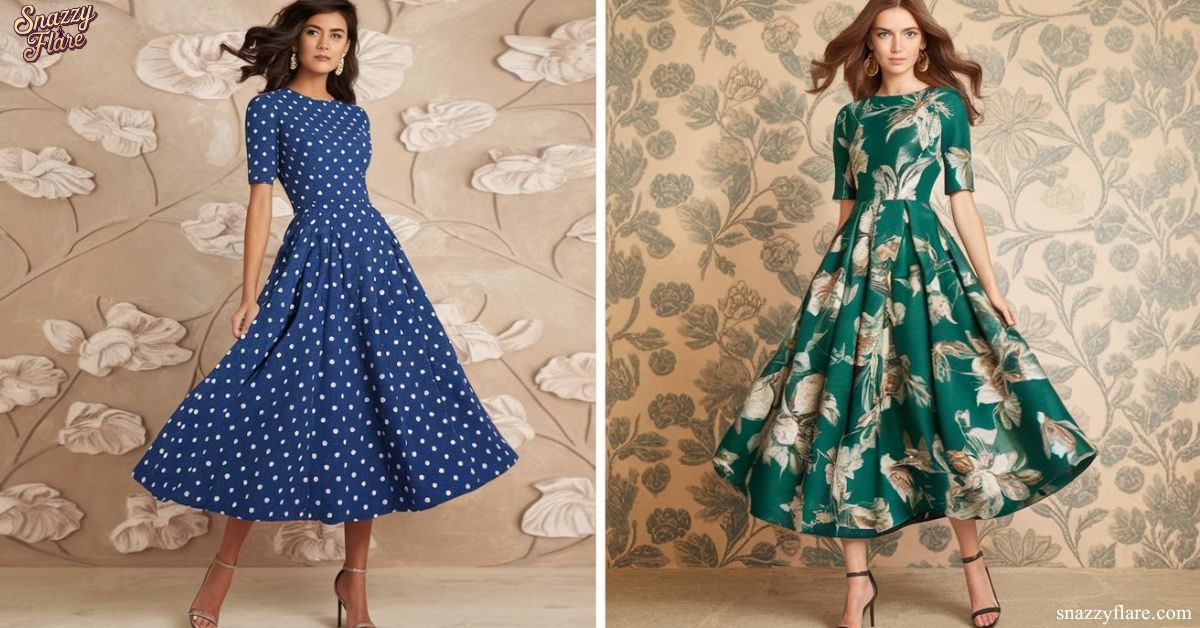
The drop waist dress features a lowered waistline that sits at or below the hips, elongating the torso and creating a flapper-style silhouette. Popular in the 1920s, this dress offers a relaxed fit while still appearing chic.
The drop waist design is perfect for those looking to break away from traditional, figure-hugging styles, offering a nod to the roaring twenties.
Unique and Statement Dress Types
Unique and statement dresses are bold, eye-catching pieces designed to stand out. These dresses often feature unconventional cuts, shapes, or embellishments, making them perfect for anyone looking to make a fashion statement.
1. Asymmetric Dress
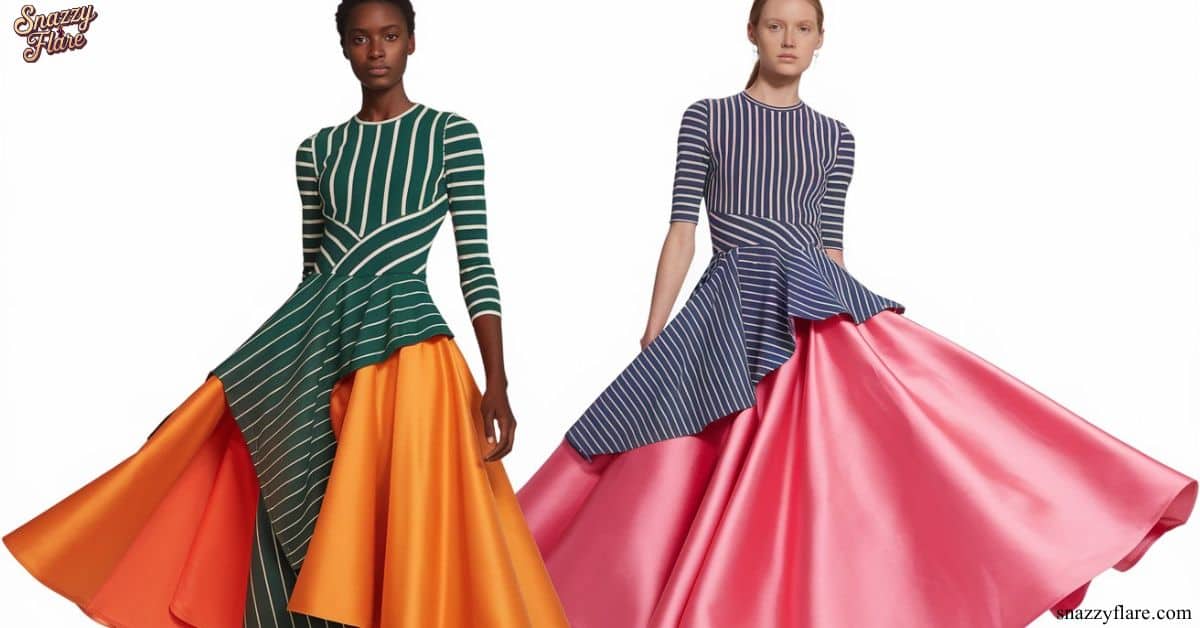
The uneven hemline or neckline defines an asymmetric dress, creating a dynamic, modern look. Whether it’s a one-shoulder design or a dress with a high-low hem, the asymmetry draws attention to the garment’s structure.
Perfect for red carpet events or stylish evenings, this style offers a contemporary, fashion-forward twist.
2. Balloon/Pouf Dress
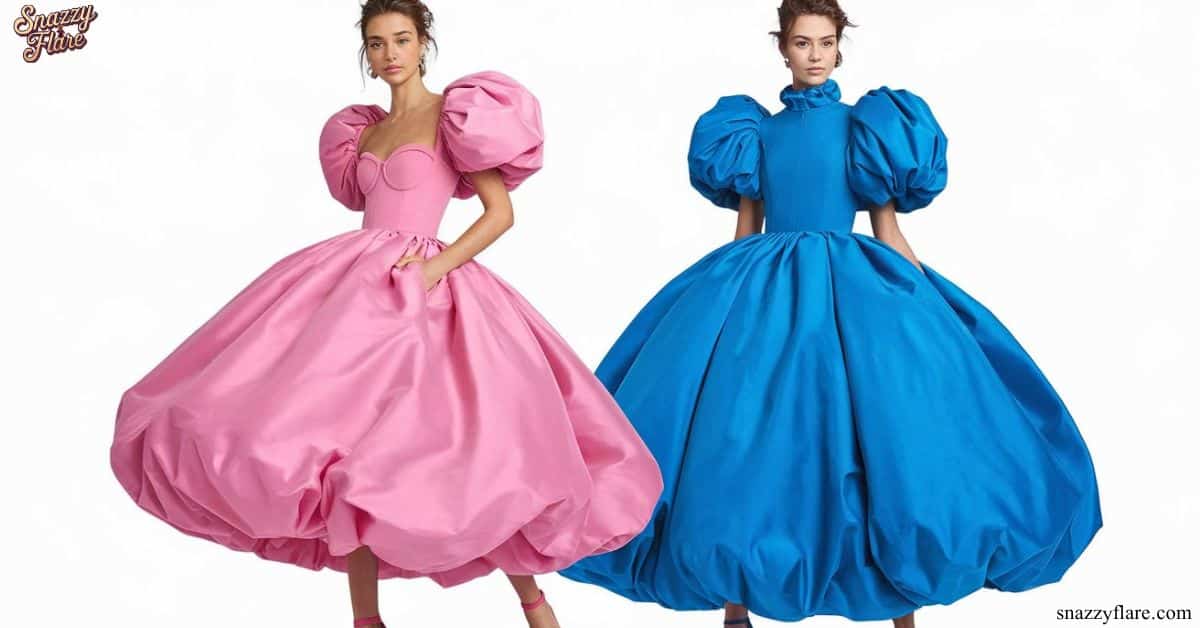
The balloon or pouf dress has exaggerated, voluminous shapes, often created with gathered fabric or tulle. Popular in the 1980s, this playful and dramatic style has made a comeback in modern fashion, adding a sense of whimsy and boldness.
Ideal for special occasions, the pouf dress exudes confidence and creativity, offering a larger-than-life look.
3. tiered dress
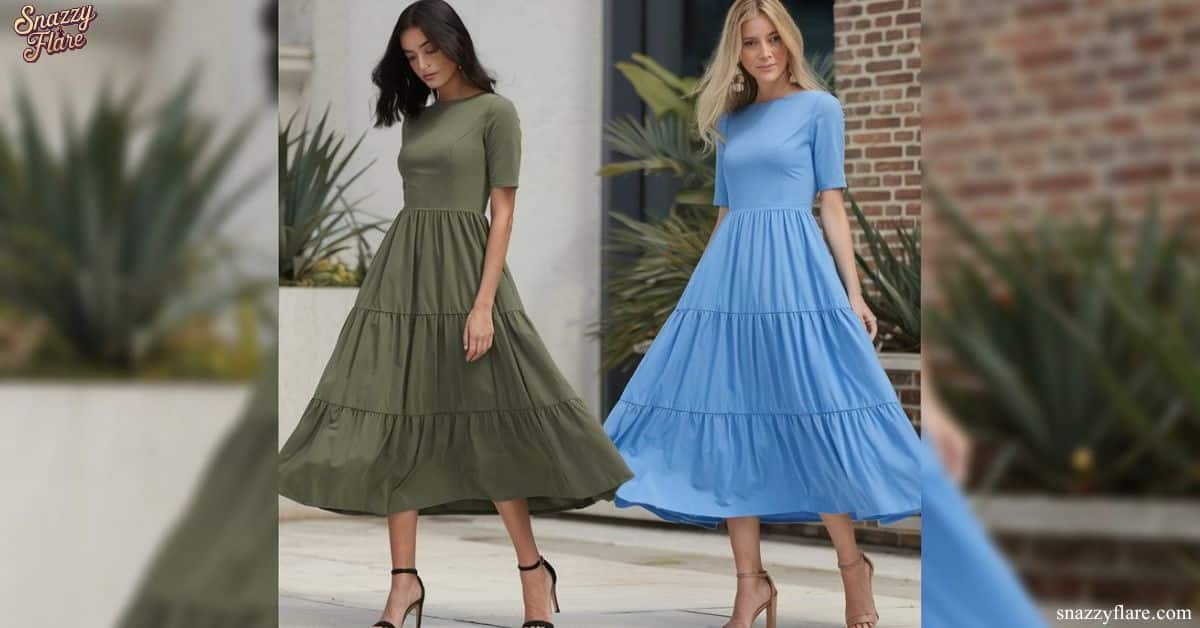
The tiered dress features multiple layers of fabric or ruffles, creating a textured, voluminous silhouette. Often associated with bohemian or festival fashion, the tiered dress is perfect for adding movement and flow to an outfit.
This style works well for casual wear or more formal events, offering both comfort and elegance through its structured layers.
Choosing the Right Dress Types
Finding the perfect dress involves more than just picking something off the rack. By considering factors like body type, occasion, personal style, and comfort, you can ensure that your dress complements you in every way. Let’s break down these elements to help you make the best choice.
1. Body Type
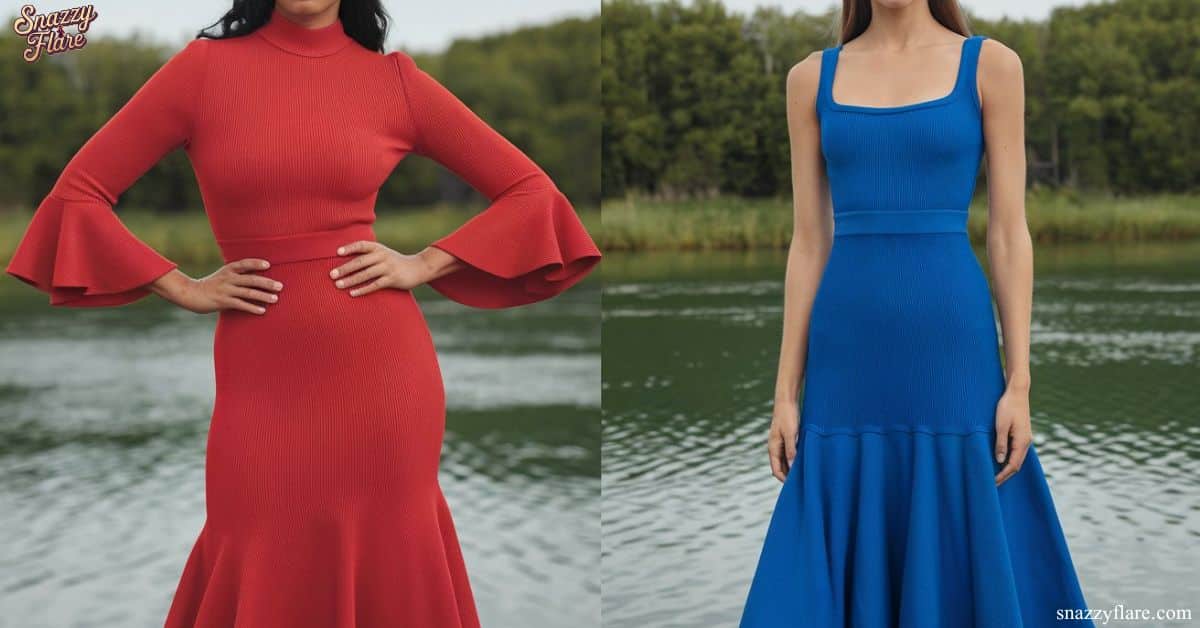
Understanding your body type can help you choose a dress that enhances your natural shape. For example, A-line dresses work well for pear-shaped bodies by balancing wider hips with a more fitted upper body. Hourglass figures often shine in bodycon or wrap dresses that accentuate the waist.
By selecting a dress that complements your proportions, you can highlight your best features with confidence.
2. Occasion
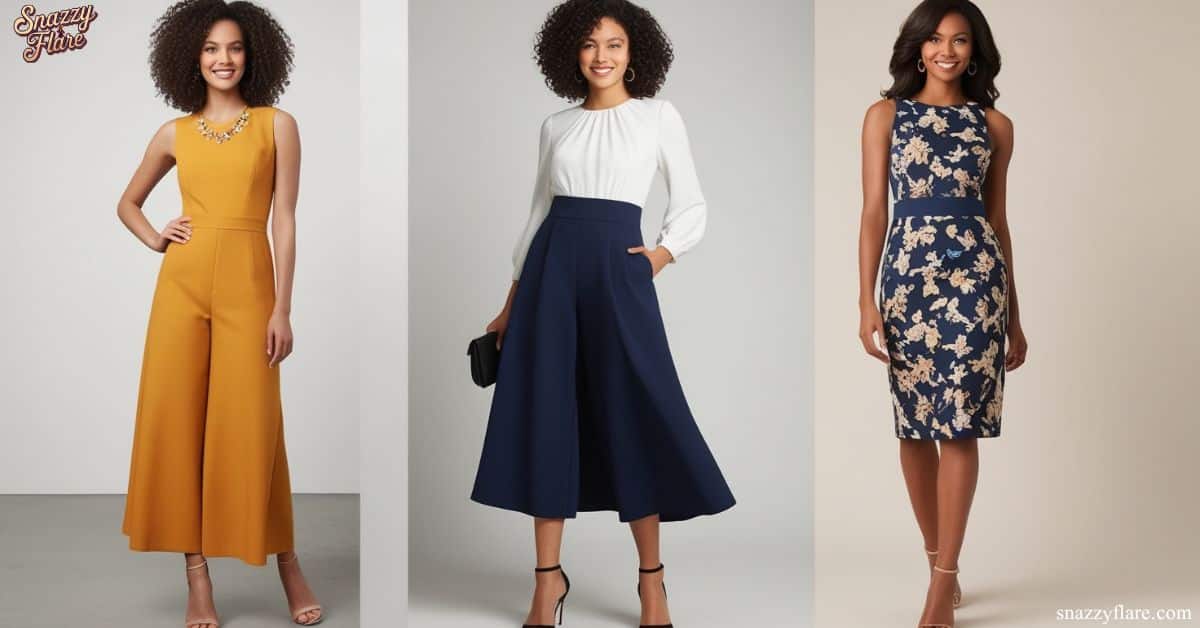
The occasion plays a key role in selecting the right dress. For formal events like weddings, a floor-length gown or cocktail dress is appropriate, while more casual gatherings might call for sundresses or skater dresses.
By aligning your choice with the event’s formality, you ensure that your outfit matches the tone of the event, making you feel comfortable and stylish.
3. Personal Style
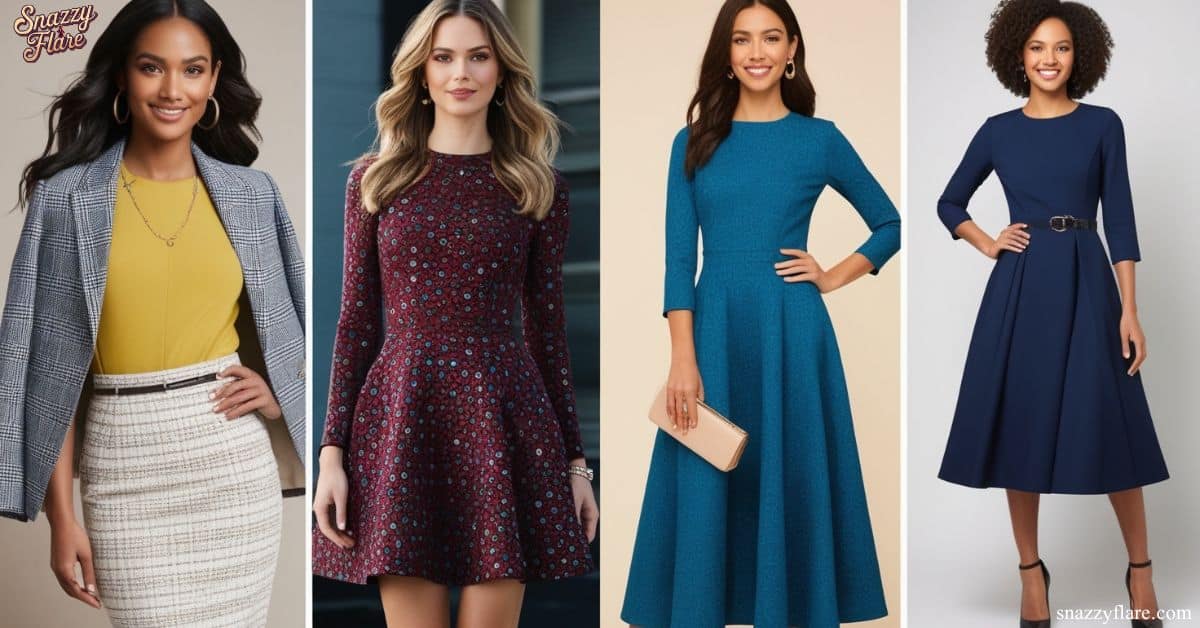
Your personal style is what makes your dress choice uniquely yours. Whether you prefer minimalist designs, vintage-inspired looks, or bold statement pieces, choosing a dress that reflects your personality helps you feel authentic.
Fashion icons often encourage experimenting with styles to find what resonates with your inner self, from bohemian to modern chic.
4. Comfort
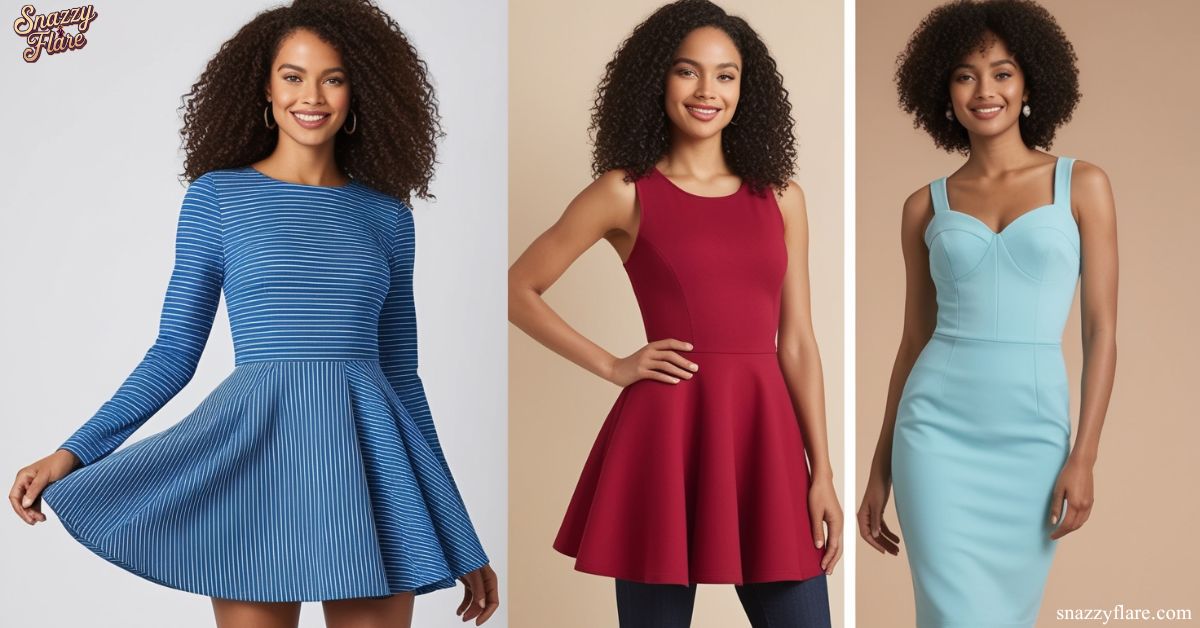
Comfort is essential when selecting a dress, especially for all-day events. Materials like cotton and jersey offer breathable, soft fabrics that are great for casual wear, while structured dresses with added stretch can keep you comfortable during formal occasions.
Prioritizing comfort ensures you not only look good but feel good, no matter where you are.
The Future of Dress Design
Dress design is evolving rapidly, with technology and sustainability at the forefront of innovation. From smart dresses to 3D-printed garments, the future of fashion is filled with exciting possibilities that merge style with functionality and eco-consciousness.
1. Smart dresses
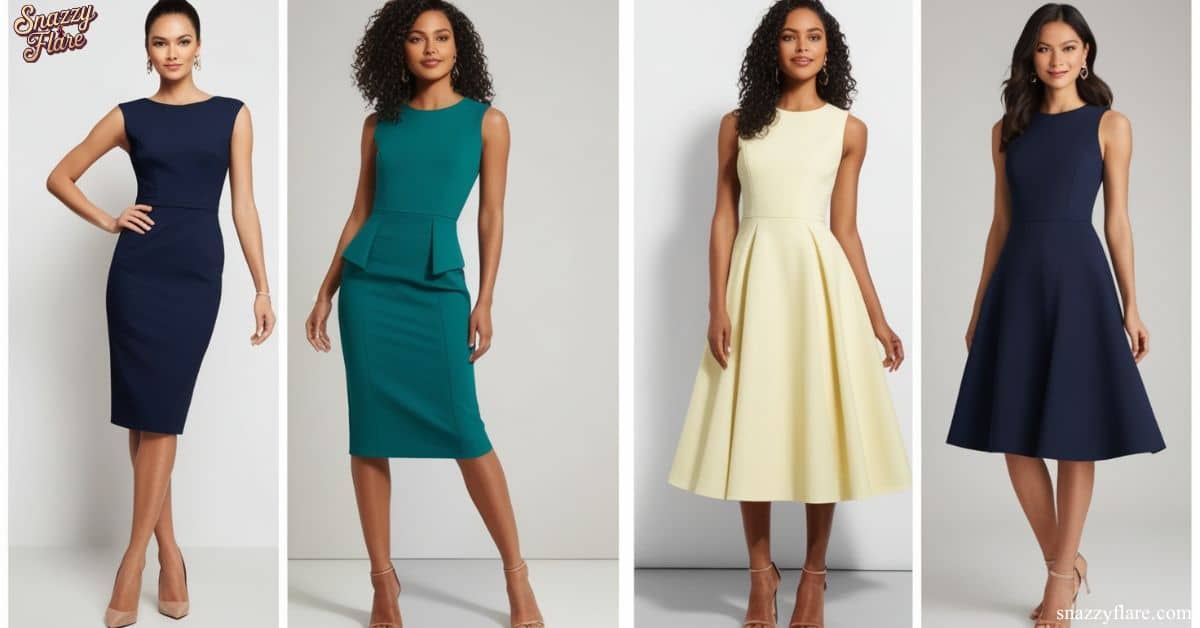
Smart dresses incorporate technology into fashion, offering features like built-in LED lights, climate control, and biometric sensors. These dresses can adapt to the wearer’s environment, such as adjusting temperature or lighting up in low visibility.
Smart clothing represents the future of wearable technology, merging fashion with practical innovations for the modern woman.
2. 3D-printed dresses
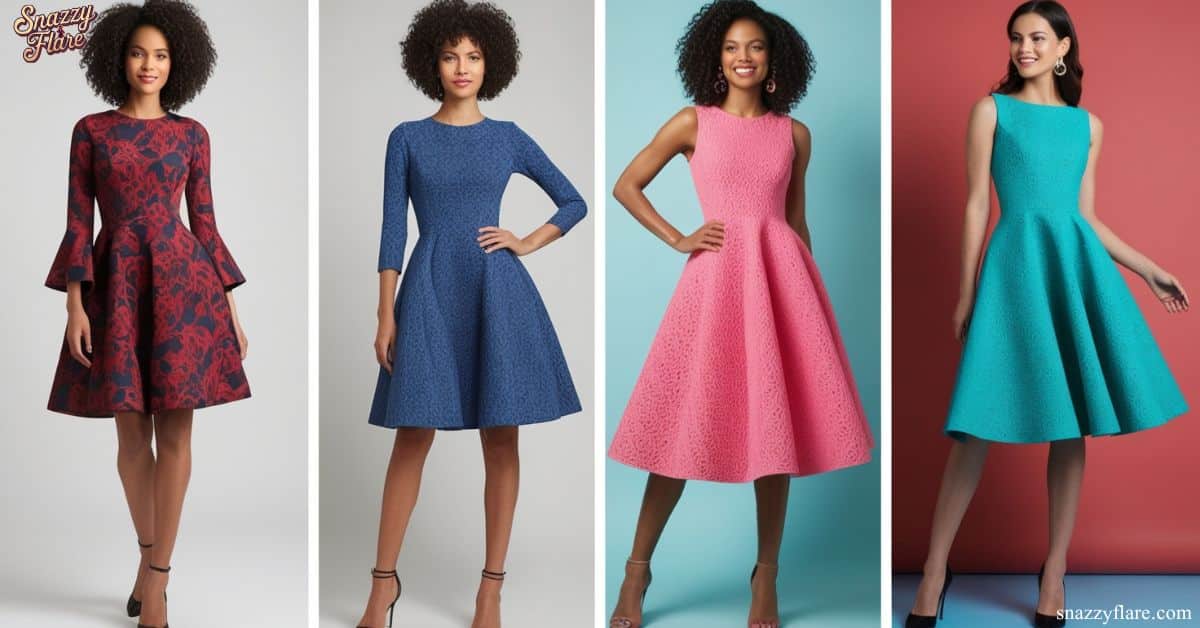
3D-printed dresses are revolutionizing the fashion industry by enabling designers to create intricate, custom-fit garments with minimal waste. Designers like Iris van Herpen have showcased avant-garde 3D-printed fashion on the runway, pushing the boundaries of creativity.
This technology allows for faster production times and a new level of customization, offering exciting prospects for the future of dress design.
3. Eco-Friendly Dress Types
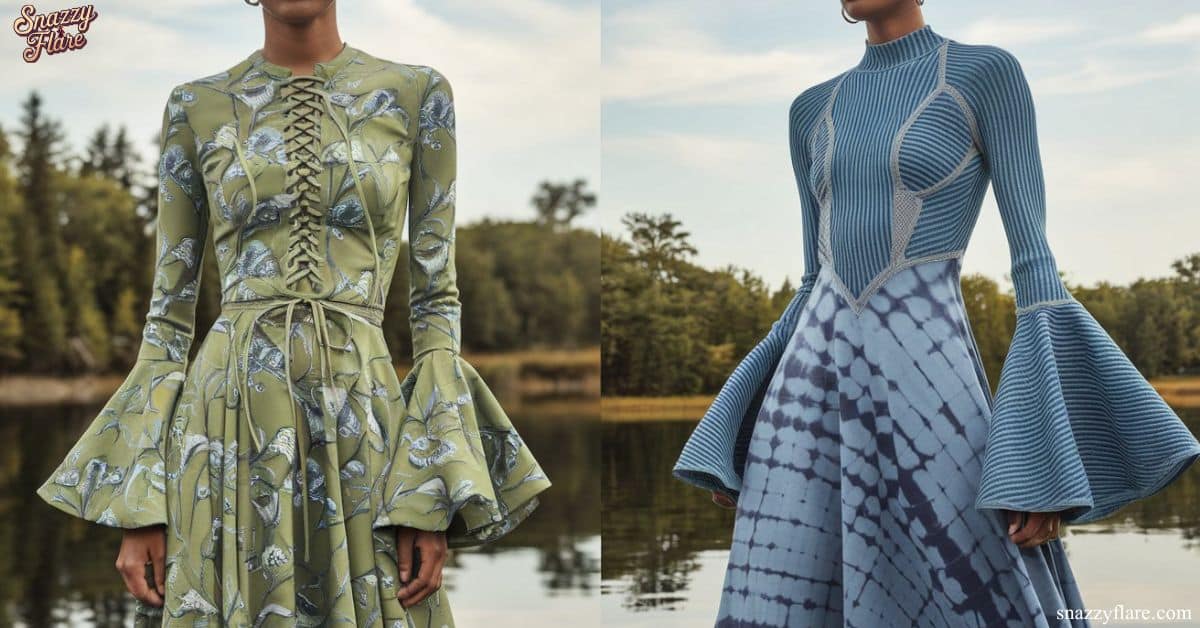
As sustainability becomes a major focus in fashion, eco-friendly dress types made from organic, recycled, or biodegradable materials are growing in popularity.
Brands are adopting practices like zero-waste production and using fabrics like Tencel, organic cotton, and bamboo to reduce the environmental impact of fashion.
Fashion leaders are increasingly focusing on sustainability, ensuring both style and environmental responsibility.
Conclusion:
The world of 48 dress Types are vast and ever-evolving, offering endless possibilities for self-expression and style. From the classic midi dress to the avant-garde asymmetric dress, each style tells a unique story. By understanding these various dress types, you can make informed choices that not only look great but also reflect your personality and the occasion.
Remember, fashion is about having fun and feeling confident. Whether you prefer the sleek lines of a sheath dress or the bohemian flair of a maxi dress, there’s a perfect dress out there for every body, every occasion, and every personal style. Embrace the diversity of dress fashion and let your wardrobe be a canvas for your individual expression.
Want To Discover Everything About White Tie Dresses?
FAQs
What type of dress is best for a wedding guest?
When attending a wedding, it’s important to choose a dress that complements the formality and theme of the event while respecting the bride and groom’s preferences. A midi or knee-length dress in a soft fabric like chiffon or silk is a safe and elegant option. Avoid wearing white or off-white to avoid upstaging the bride. Floral prints, pastel hues, or even jewel tones work well for both daytime and evening weddings. For a more formal event, a cocktail dress or a wrap dress can be perfect. Pair your dress with subtle accessories and comfortable heels for a graceful look.
How do I style a casual dress for a night out?
To elevate a casual dress for a night out, you can add bold accessories and layer with statement pieces. Start with a versatile dress like a T-shirt dress or slip dress, then add a leather jacket or a chic blazer for an edgy touch. Pair with high heels or ankle boots, and accessorize with layered necklaces or a statement clutch. To complete the look, opt for a bold lipstick or a smoky eye makeup for added drama. This mix of casual comfort with eye-catching details creates a look that is both stylish and fun.
What is the best dress for a plus-size figure?
The best dress for a plus-size figure enhances your natural shape and ensures comfort. A-line dresses are a great choice as they balance proportions by highlighting the waist and offering a relaxed fit through the hips. Empire waist dresses can also work well, drawing attention to the bust and allowing freedom around the midsection. If you prefer something fitted, a wrap dress can accentuate curves and create a flattering silhouette. Opt for fabrics with a bit of stretch for added comfort and confidence. Don’t forget to embrace your body and experiment with styles that make you feel fabulous.
Can I wear a dress to a business meeting?
Yes, dresses can be a great choice for business meetings when styled appropriately. For a professional look, choose a dress with a simple silhouette, such as a sheath dress or a shift dress. Stick to solid colors like navy, black, or gray, or subtle patterns like pinstripes. Avoid dresses with too much embellishment or anything too revealing. Pair your dress with a tailored blazer, closed-toe heels, and minimalistic accessories to complete the look. This combination ensures that you look polished, professional, and confident for any business meeting.
What is a bodycon dress, and when should I wear one?
A bodycon dress is a form-fitting style that hugs your curves from head to toe, typically made from stretchy fabrics like jersey or spandex. It emphasizes your natural shape and creates a sleek, feminine silhouette. Bodycon dresses are ideal for evening events, parties, or date nights when you want to make a bold fashion statement. To balance the fitted nature of the dress, keep your accessories minimal and choose heels that elongate your legs. If you’re attending a more formal event, layering with a blazer or a long coat can add a sophisticated touch.
How can I make a maxi dress suitable for work?
To make a maxi dress work-appropriate, focus on the fabric and fit. Opt for a more structured or minimalist design in solid colors or subtle prints. Pair your maxi dress with a tailored blazer or cardigan to create a polished look. Closed-toe shoes, such as pumps or ballet flats, can add a professional touch, while a simple handbag or tote will keep the outfit functional. Avoid overly plunging necklines or too much volume in the skirt, which could look too casual for the office. With these styling tweaks, a maxi dress can become a stylish and appropriate choice for work.
What should I look for in an eco-friendly dress?
When shopping for an eco-friendly dress, consider the materials used. Look for dresses made from sustainable fabrics like organic cotton, hemp, Tencel, or recycled polyester. These materials have a lower environmental impact compared to conventional fabrics. Pay attention to the brand’s production process, ensuring they prioritize ethical manufacturing and fair labor practices. Certifications like GOTS (Global Organic Textile Standard) or Fair Trade can help you identify truly sustainable options. Additionally, choose dresses designed for longevity with durable construction, as these will have a lower environmental footprint over time. Sustainable fashion is all about making choices that benefit both your style and the planet.
Summary: 48 Dress Types for Every Occasion and Style
This blog explores 48 iconic dress types, from timeless classics to modern statement pieces, offering options for every occasion and body type. Each section highlights a different category of dresses casual, formal, vintage-inspired, and more providing readers with insights on what to wear for weddings, business meetings, casual outings, and everything in between. Additionally, it delves into dress design variations like necklines and sleeves, offering guidance on how to make the perfect choice for your body type, style, and occasion.
With a focus on both fashion and comfort, this guide also covers eco-friendly dress options, ensuring that your wardrobe reflects your personality while keeping sustainability in mind. Whether you’re looking for a bold statement dress or a versatile everyday piece, this comprehensive guide has something for everyone, empowering you to make confident style choices.

“Jessica Jone is an experienced fashion blogger at Snazzy Flayer. With a passion for style and a keen eye for trends, she shares practical tips and fashion insights to help readers elevate their everyday looks.”
